August 19, 2018
Martha O'Kennon
While I stand by in anticipation of the blooming of the goldenrod, the rain has been out there, helping out with the blooming and also making it hard to get many pictures. Here is a strand from Thursday, August 16, showing the beginning of the blooming process - the flowers are obviously getting more complex. I just did a search on all the goldenrod pictures, and found that the ones from 2017, 2016 and 2015 were almost all in the same state of budding. So my sighs of despair for the late-opening goldenrod buds were pretty much without basis.
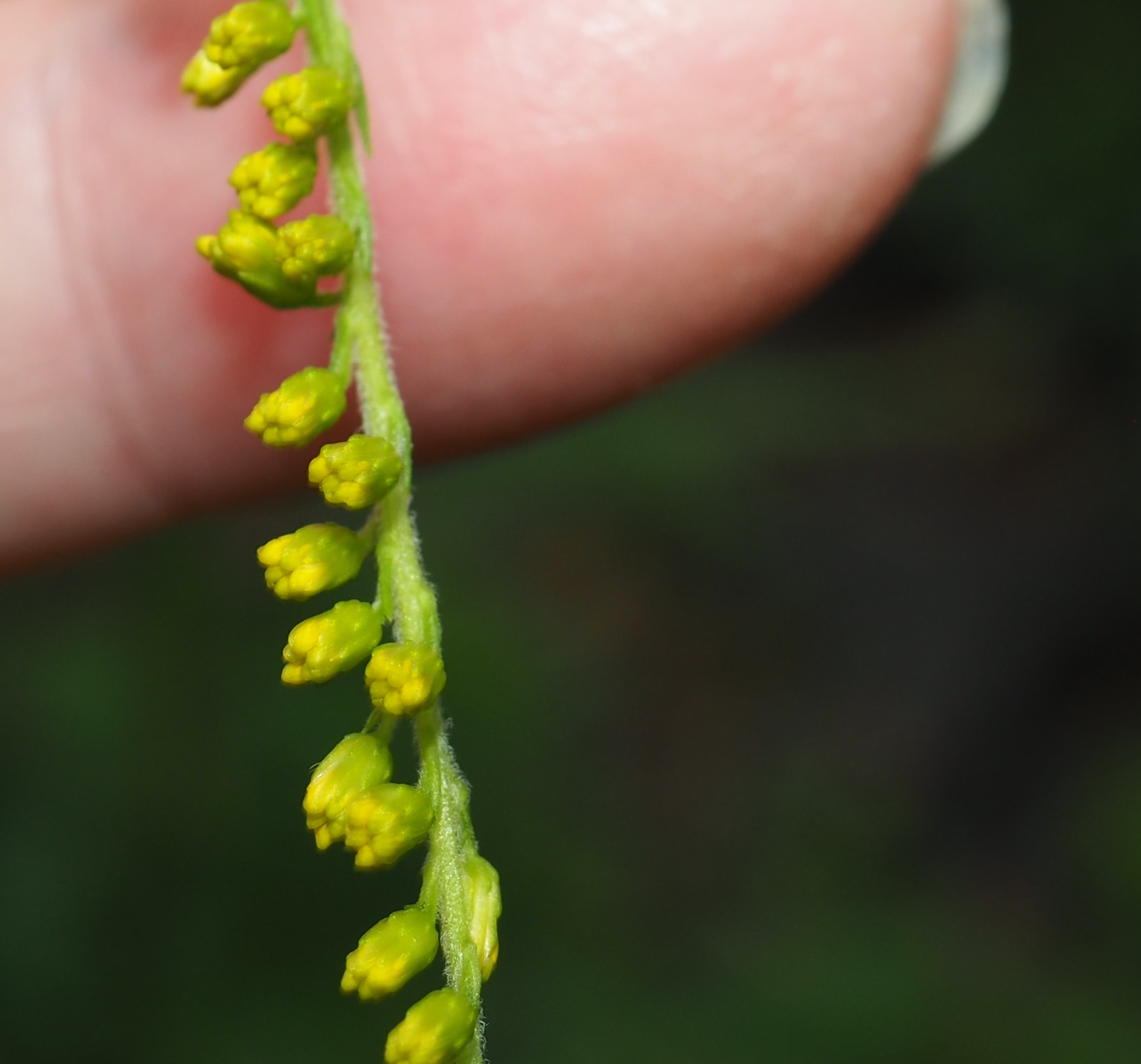

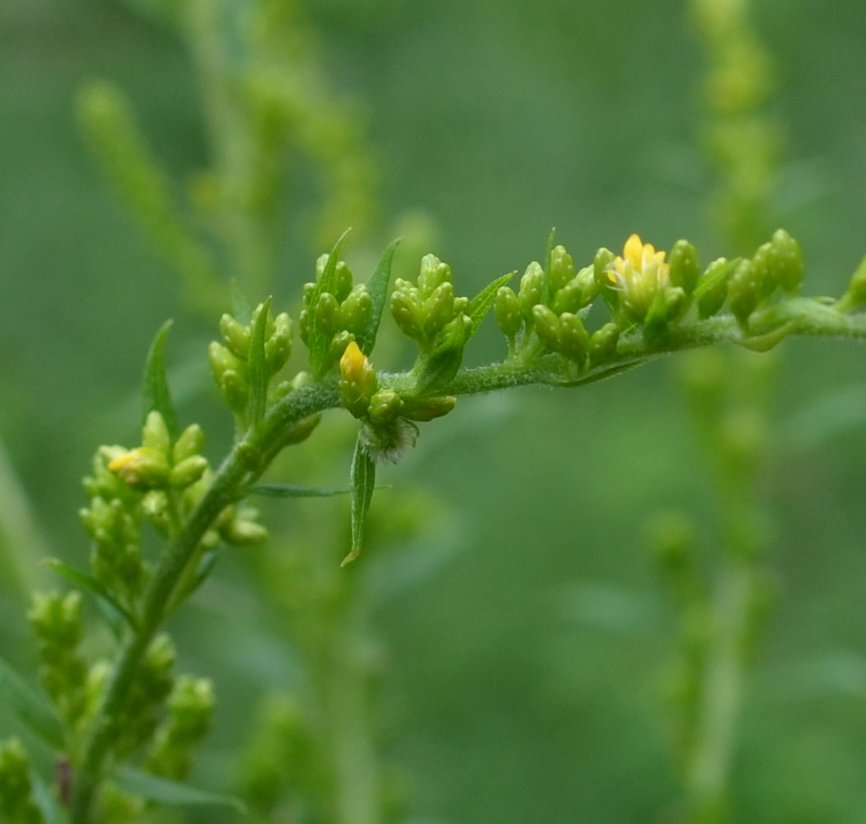
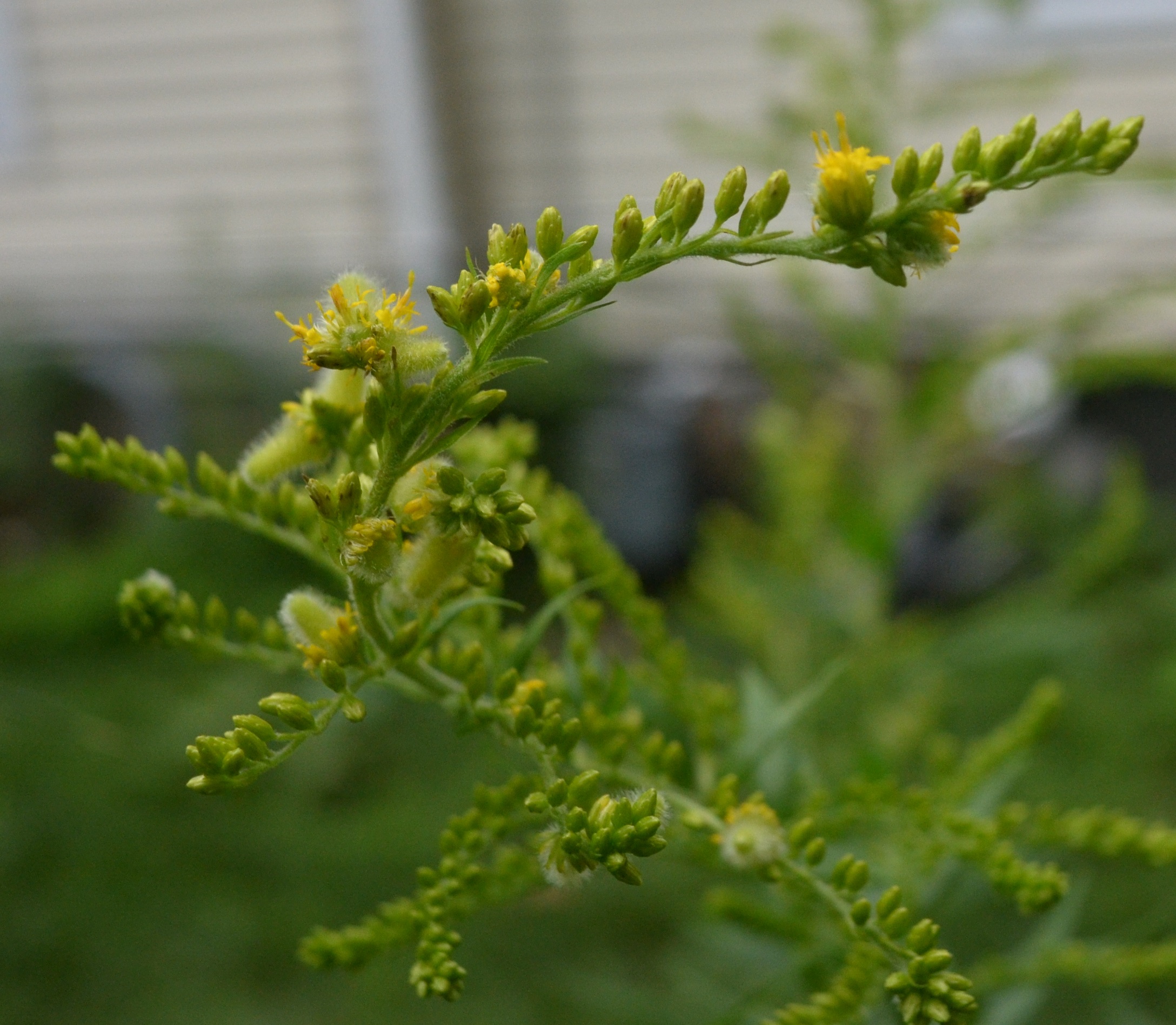
Remember that there is information in the name of the file for each image. You can see it by mousing over the image - look at the lower left of the screen. Or you can click on the image to get to the (usually) larger image. Then the info is displayed in the address line above. Sometimes the second click will actually display a different view of the original image.
This week I didn't do too much sleuthing about ants. First up is one of the original images of a "Carpenter"-type ant on the goldenrod, and the second one that we have now spotted many times on oak, elm, and goldenrod.. Numbers 3 and 4 are barklice, of which we have known #4 (Polypsocus cruciatus) for a very long time. It is one that sometimes I've been able to see and identify without the camera lens.
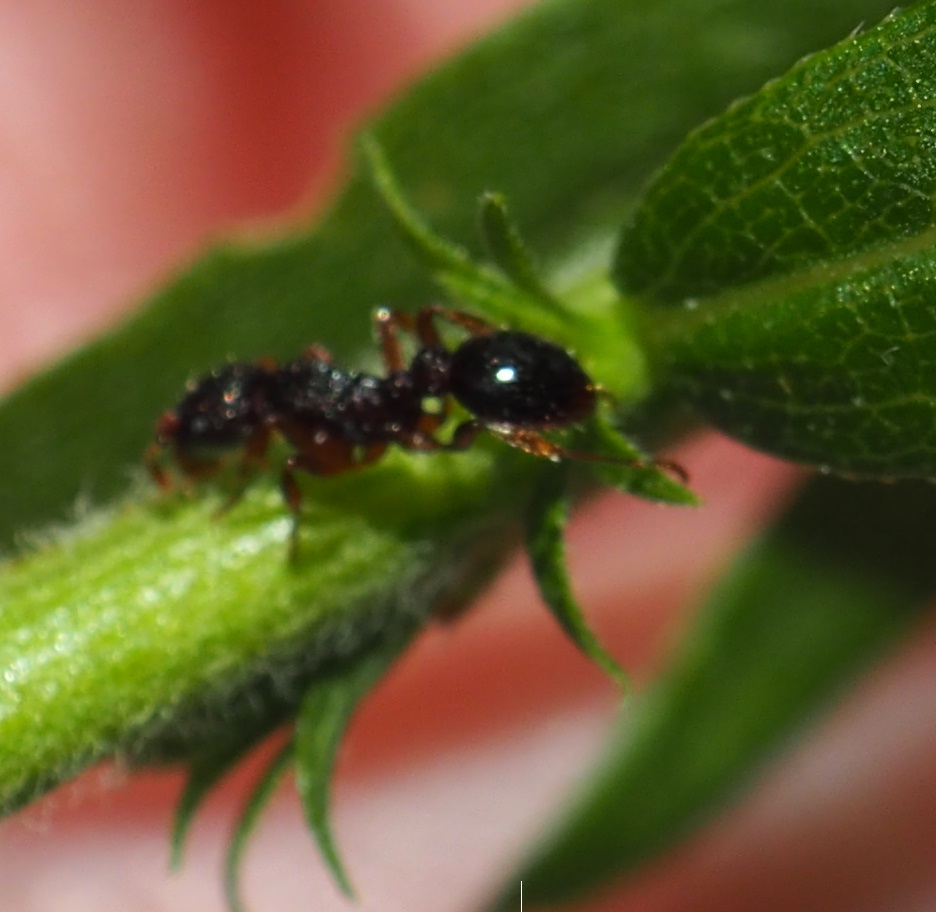
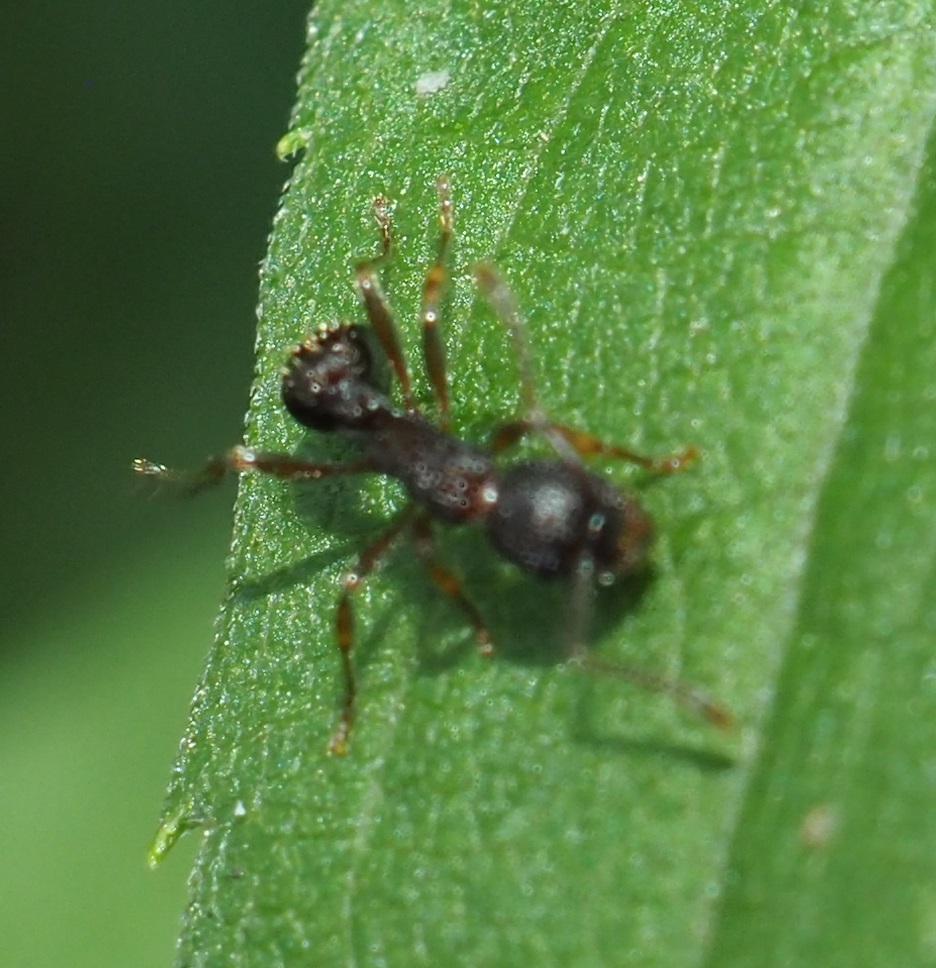
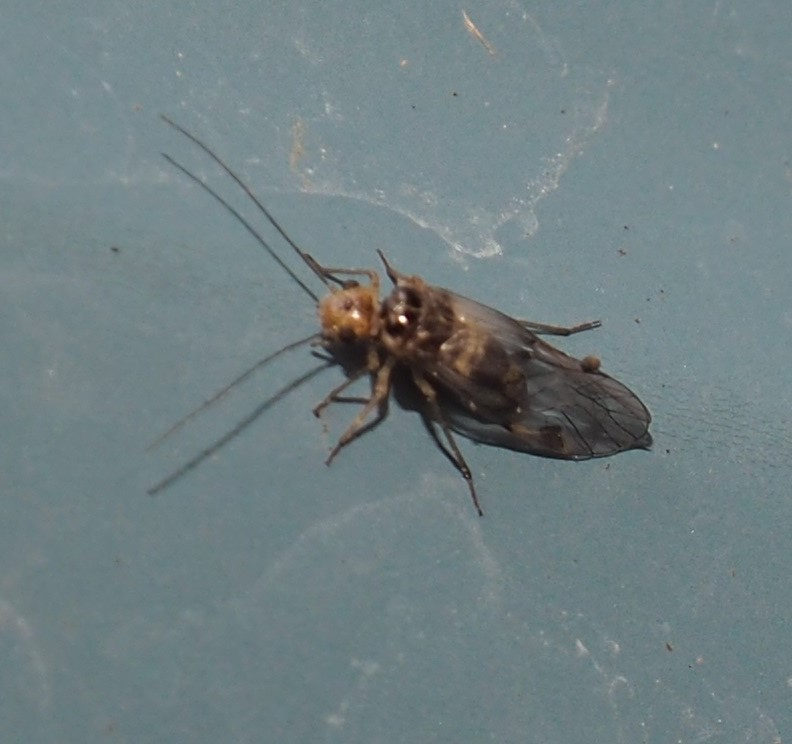

This week I learned a bit about the ants in combination with the red blobs on the sides of an oak stem. My neighbor's sister Pamela pointed me to some links about the situation. Apparently the red growth, a gall formed by a tiny wasp (a Gall Wasp) who lays her egg in a space on the stem. Maybe she also injects something into the red bits, or maybe the introduction of the egg (and soon the larva) is itself a big enough annoyance that the gall grows more cells to protect itself against further invasions. Maybe that growth is edible to the ants. Or the ant likes to munch on the gall mass. I'm not quite clear about this detail. But at some point the wasp emerges from the gall mass. This gall mass (or Gall) is formed by the wasp, and so the wasp is called a Gall Wasp. Here is the picture from last week. Here are a few more critters that are galls or probable galls. The little wrinkles in the walnut leaves are caused by some critter. The brown growth on the oak is either a gall or a bug of some sort (I don't think so).
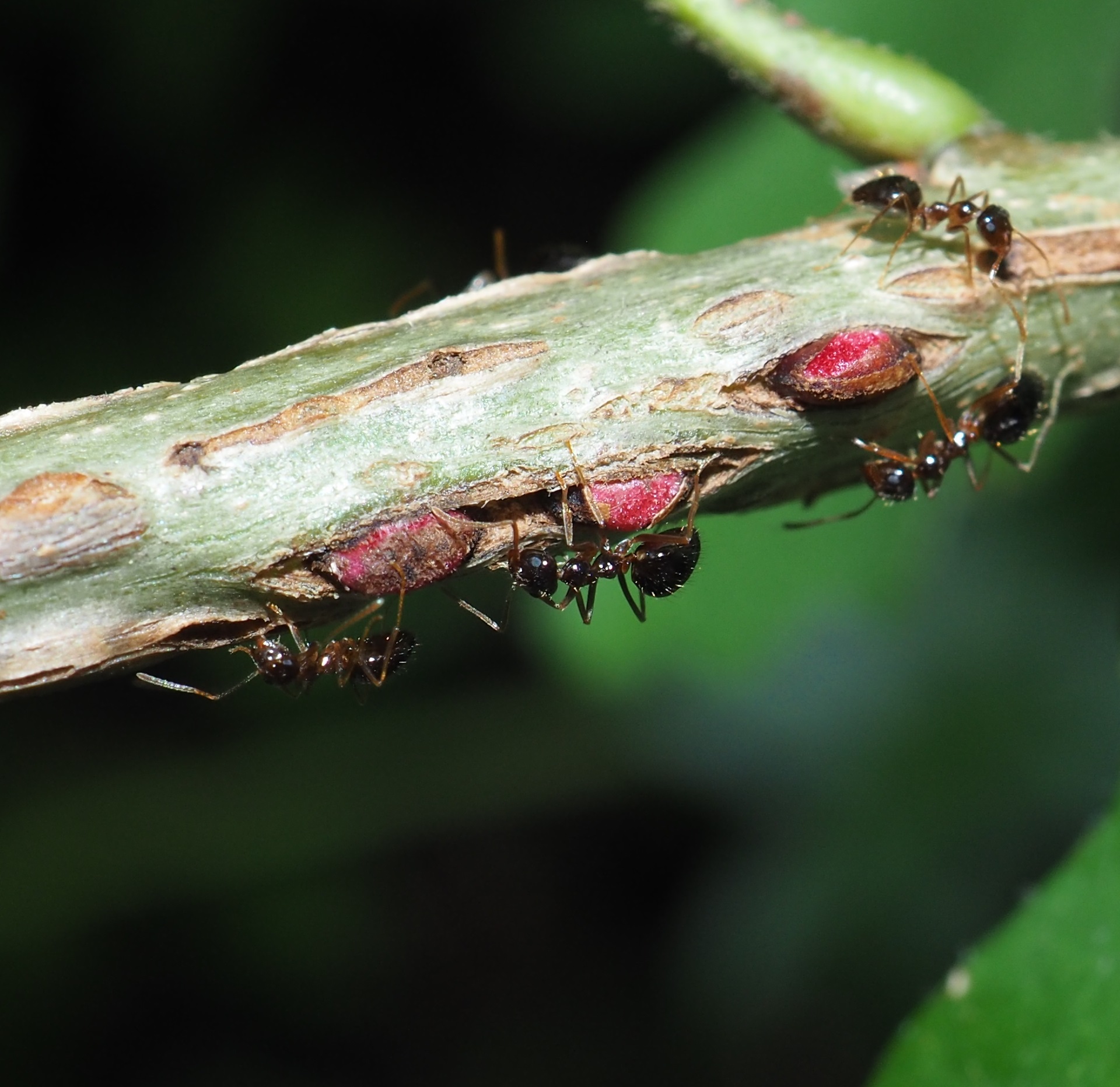
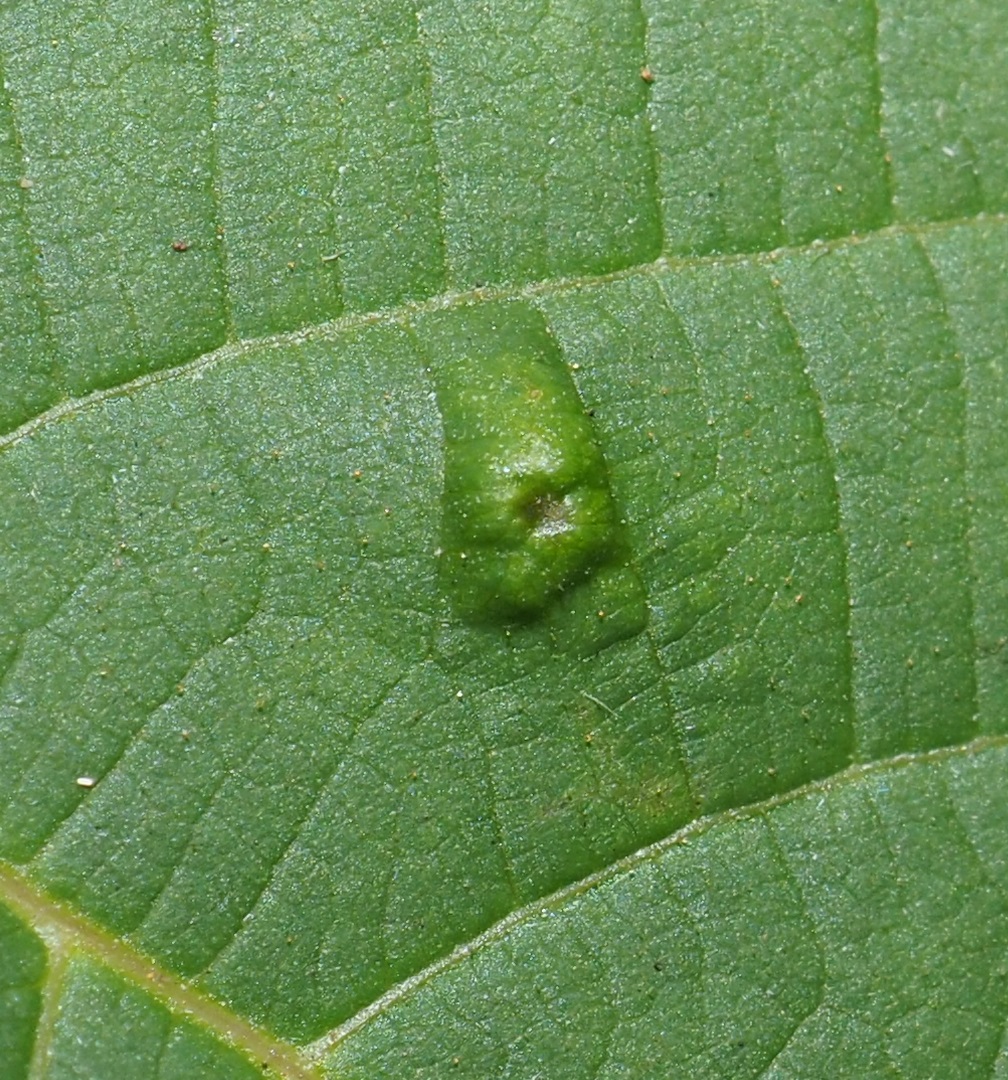
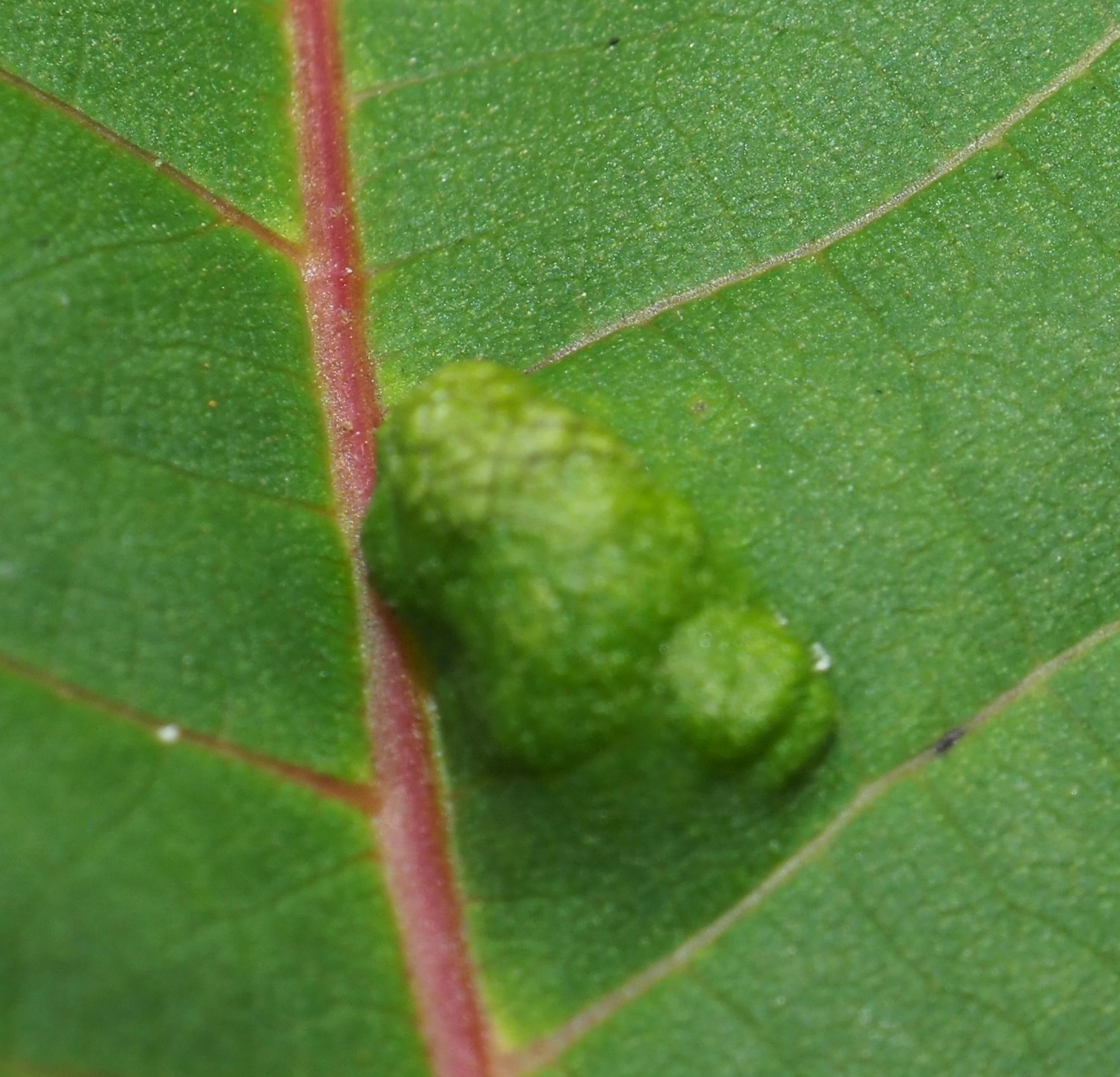
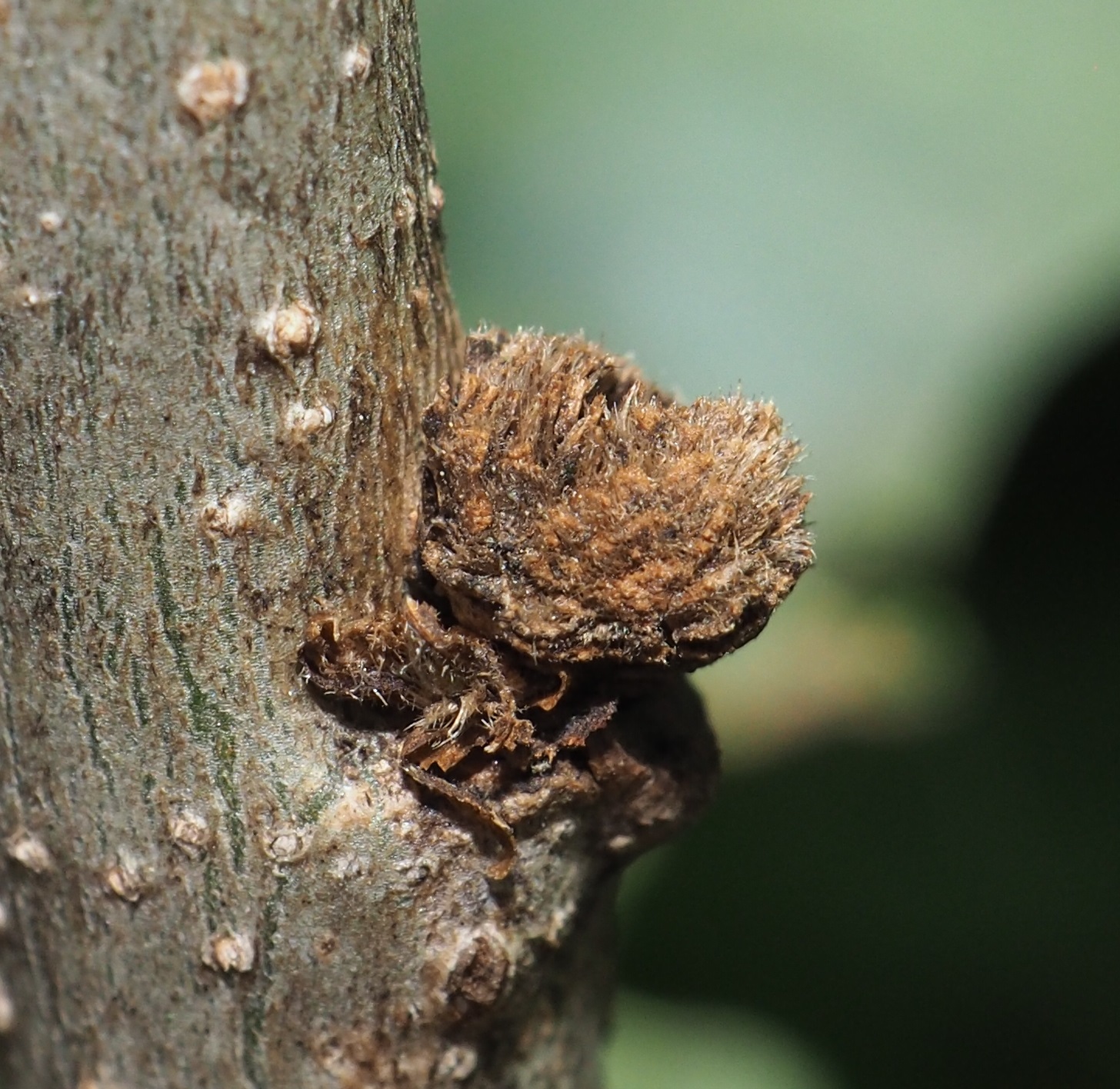
The lovely little pink and yellow things on the goldenrod look like those caused on oak by the Crystalline Gall Wasp. Too bad this isn't oak, but goldenrod. But aren't they sweet in a creepy sort of way? The next is a cluster of galls on wild grapevine. Third is not a gall, but a very flat insect called a Scale Insect.
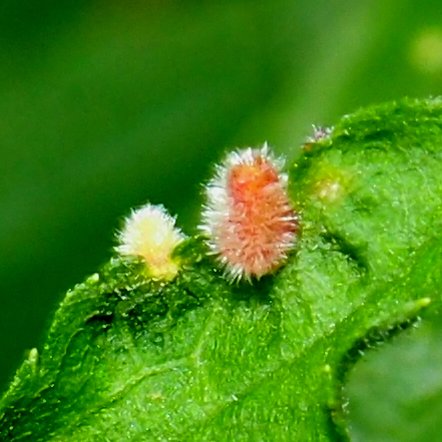
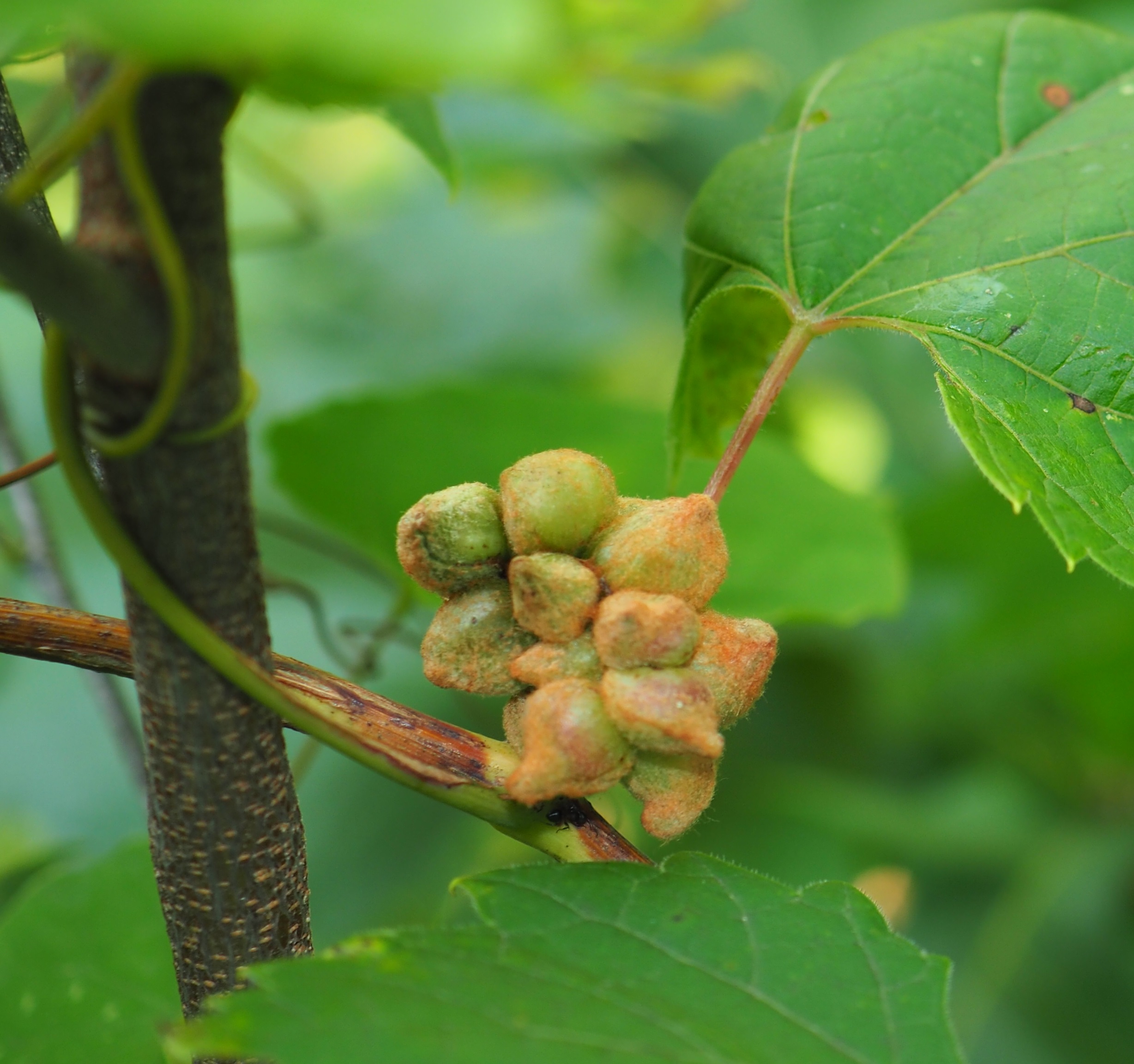
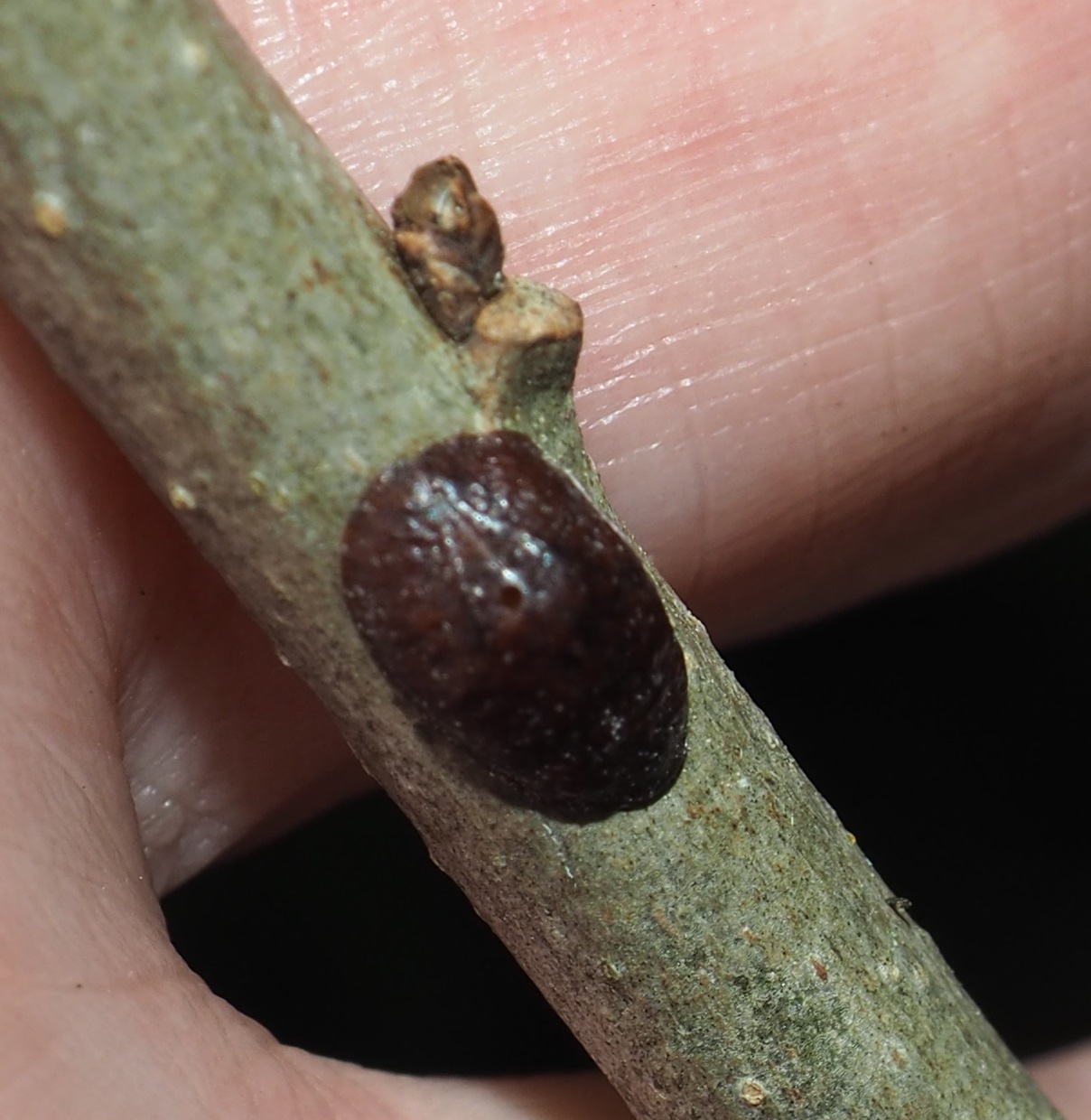
I guess all that was a flare-off from "ants". Here is a tiny bee on a tiny flower on a weed plant. Next is an Asian Lady Beetle. The third just looks like a "small beetle".
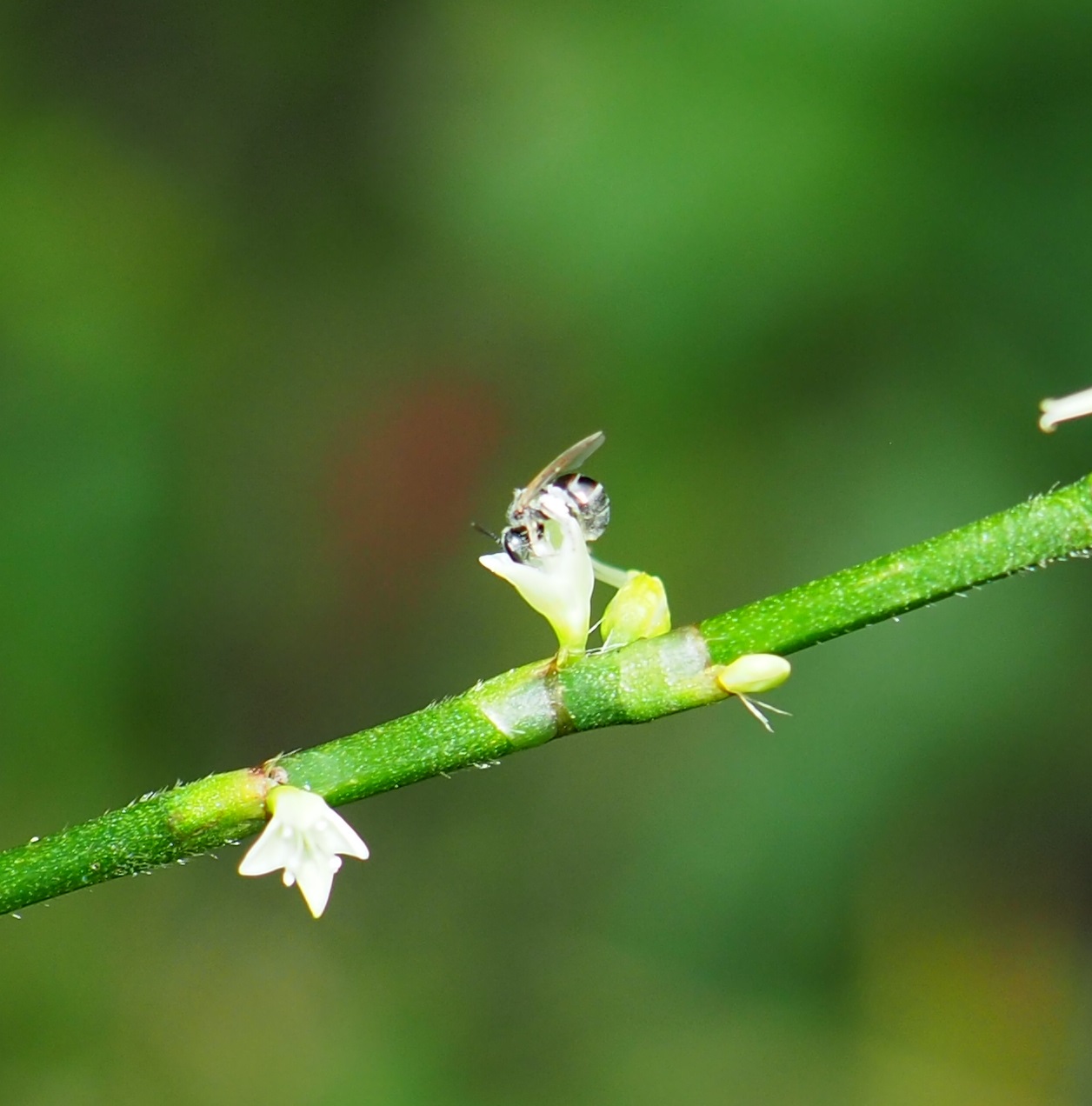
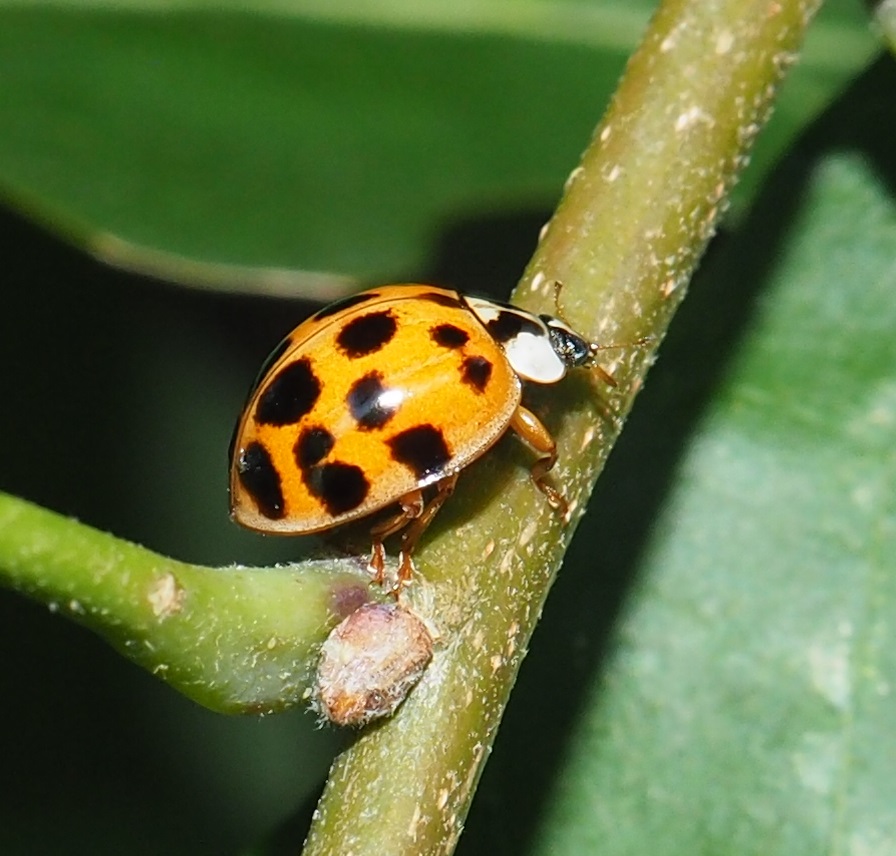
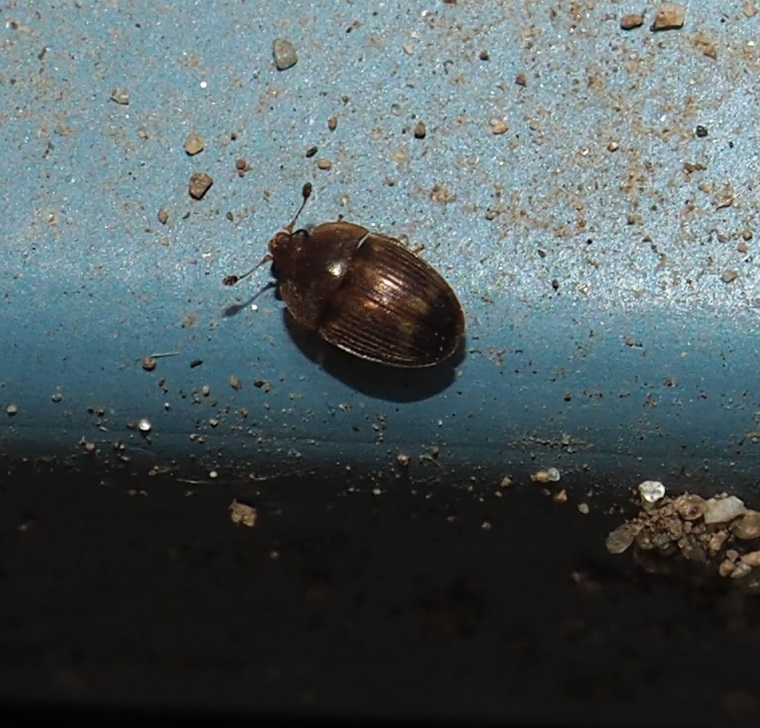
Now that that was all the Beetles for this week, let's get hoppin' over to see the Bugs. Here is one of the color variations on Zelus luridus: I have only this month been finding Assassin Bugs with pretty blue abdomens. Even the top view with the yellowish markings is surrounded by blue. I also saw quite a few "normal" light-green individuals.
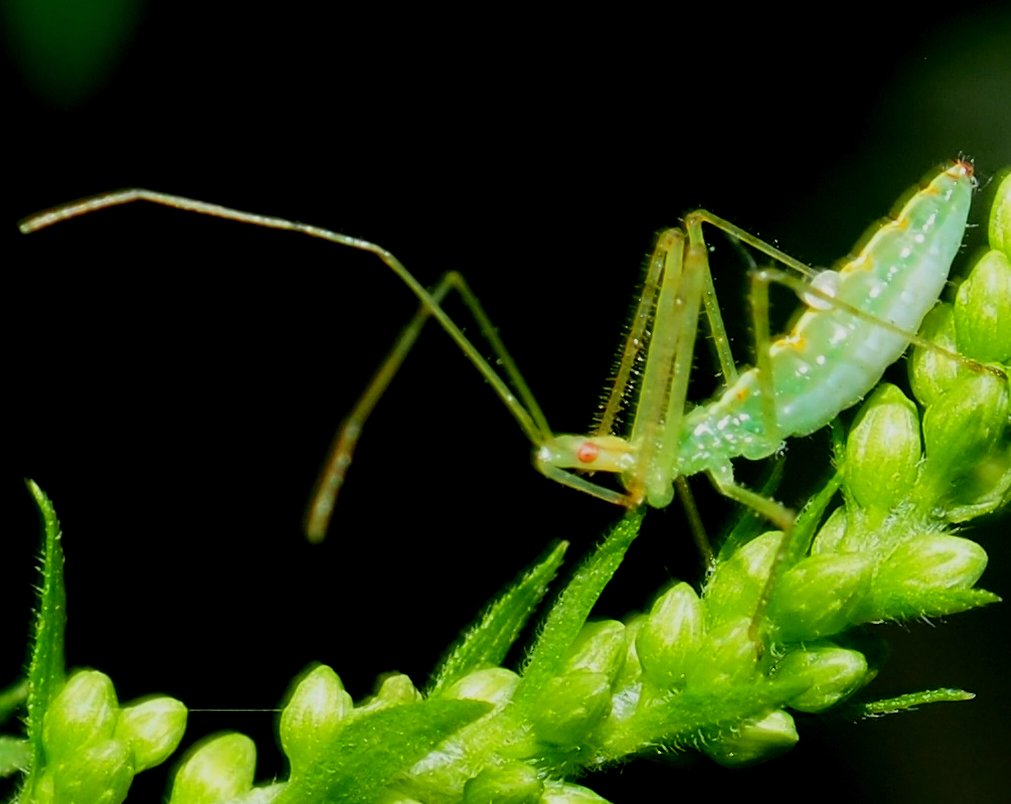
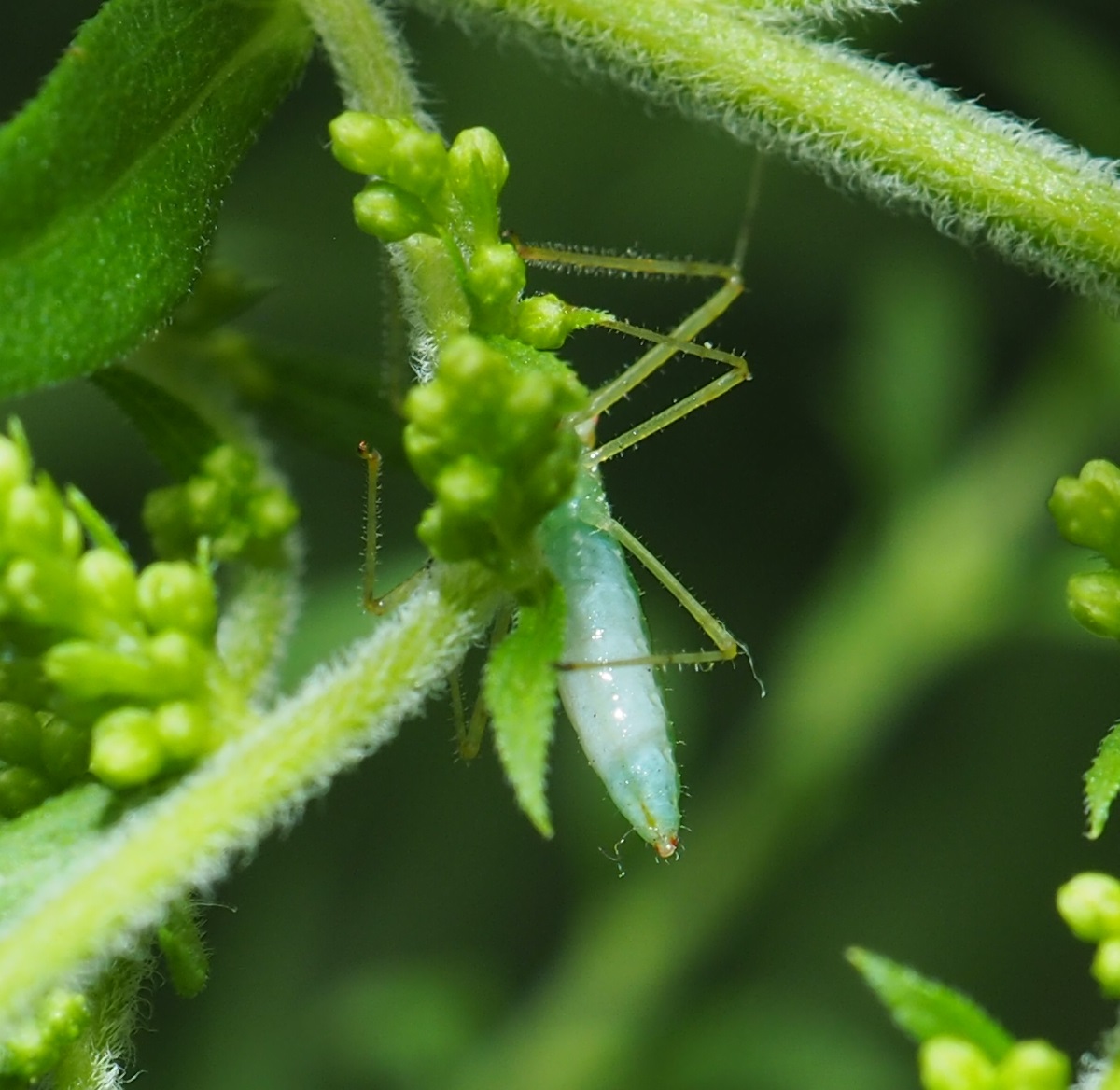

We had several kinds of leafhoppers. This is one of the greenish-blue ones facing us. Next is one of the Jikradia olitoria. You remember the ones we were seeing a few weeks ago. This one was on elm instead of the oak we'd begun to search for them earlier. Here is one of the earlier ones. Can you see any size difference? A flash-forward: I saw an adult J. olitoria yesterday - you'll see it next week.
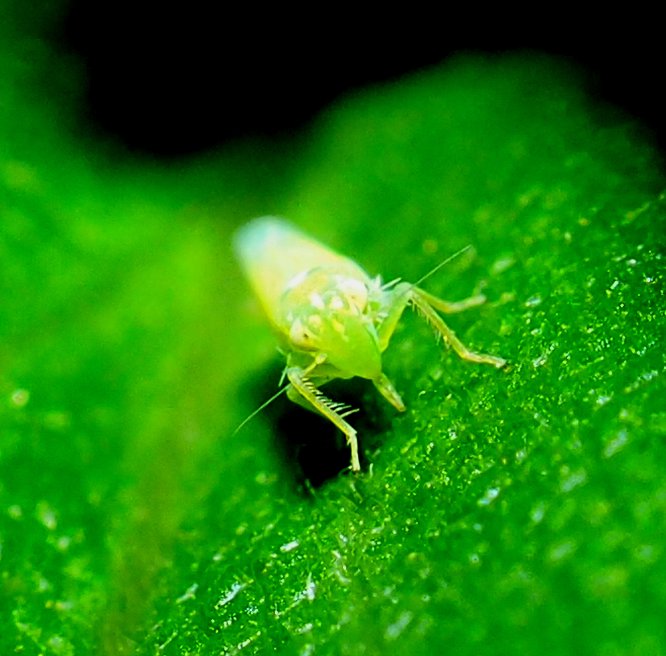
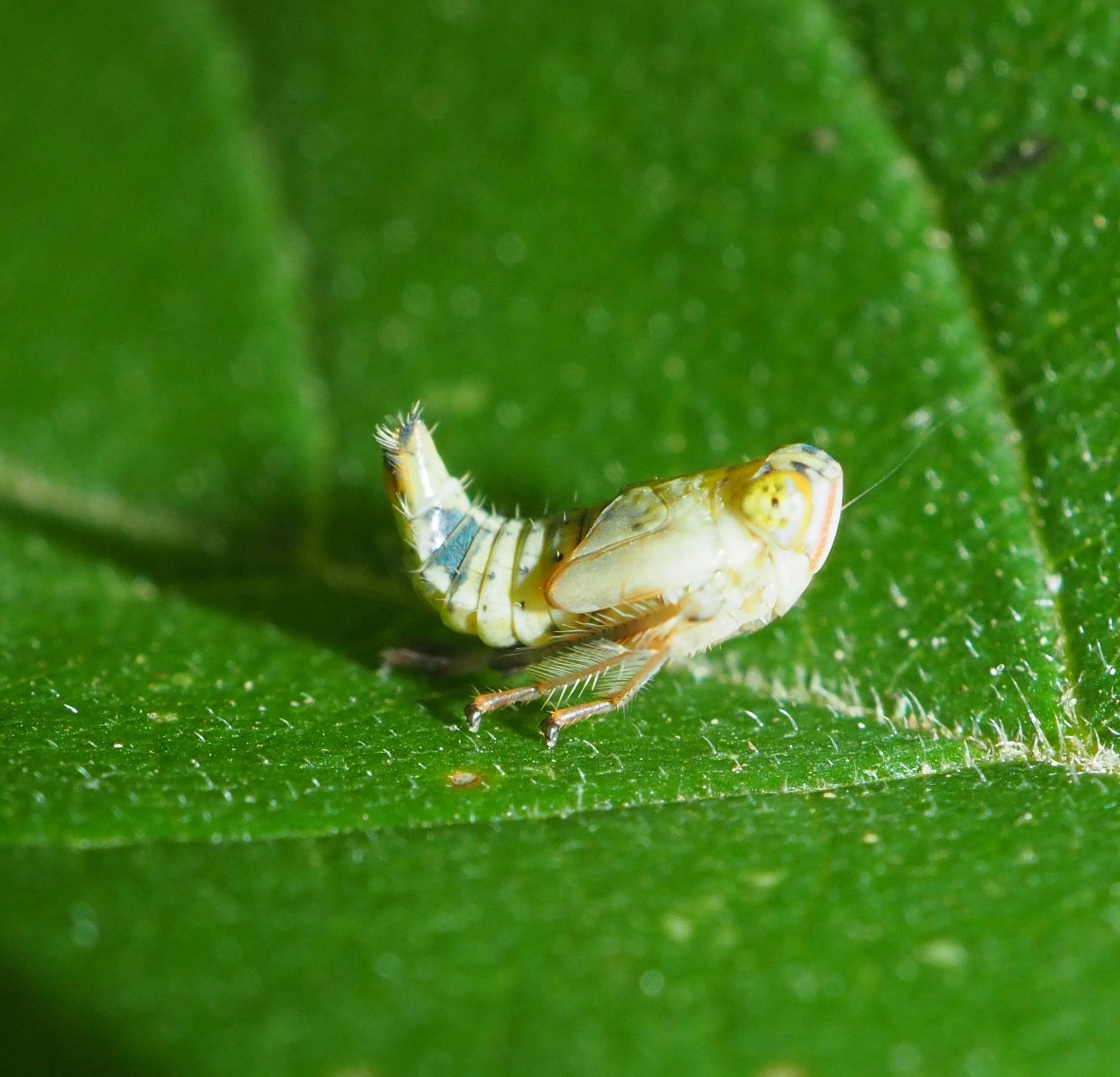

Another one of our favorite leafhoppers is the Candy-striper, very likely the Red-banded Leafhopper (Graphocephala coccinea). Here is one looking very grand. Then there is this pair, each of which is displaying its naughty bits. The female is the one with the pointy end sticking out beyond the wings, while the male is the one with the very fancy collection of bits. Third is a rear-end view of a male.
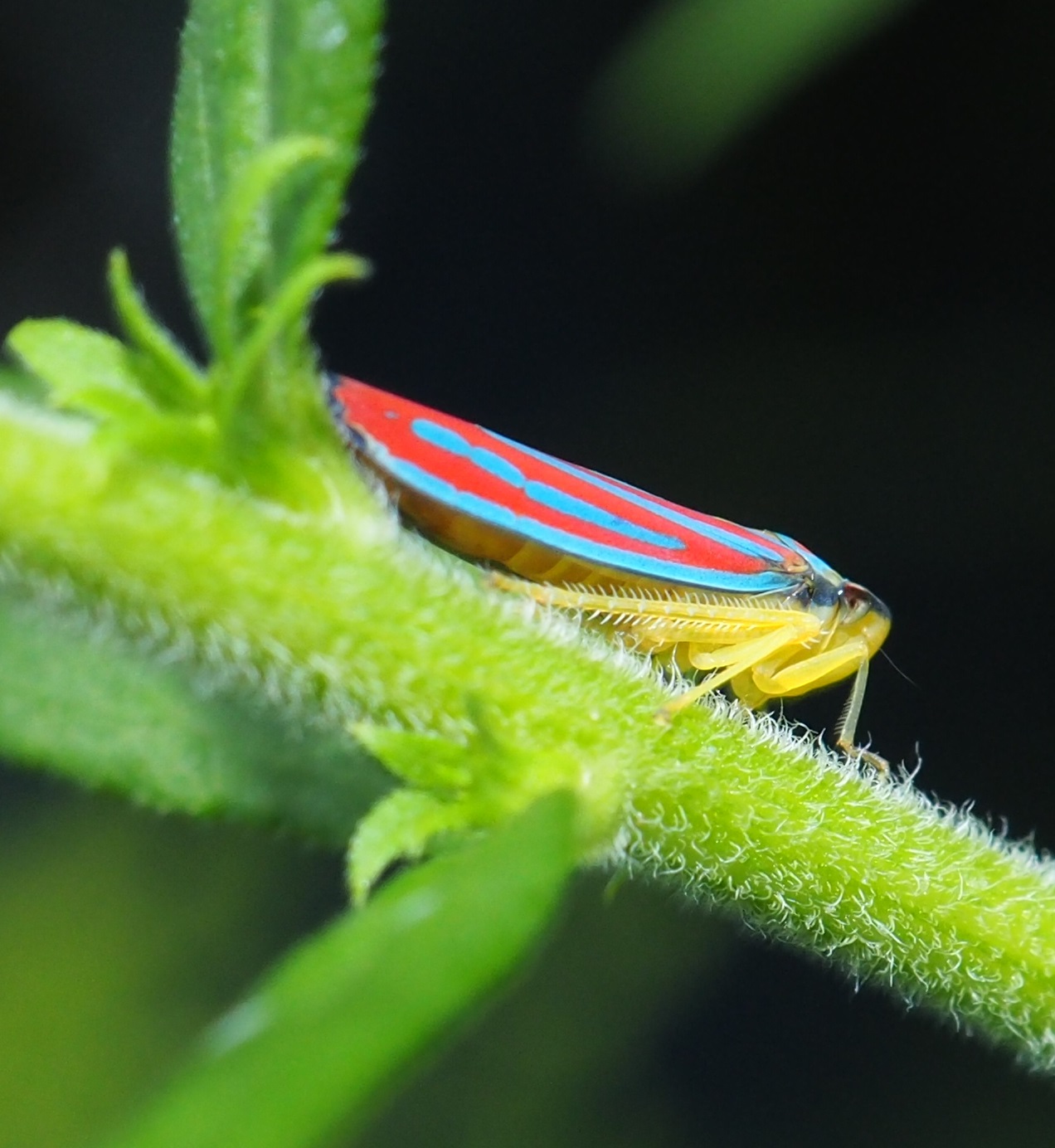
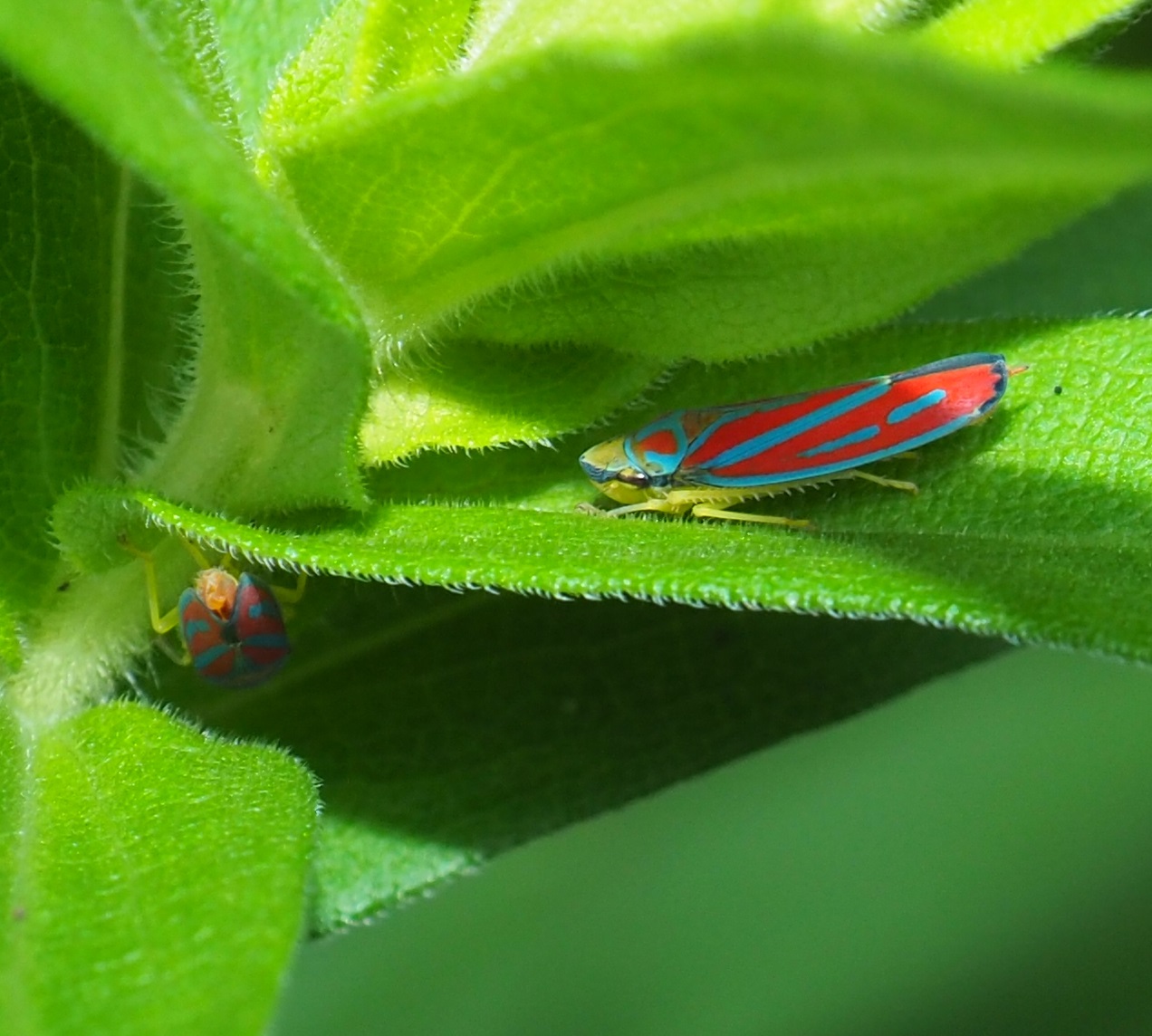
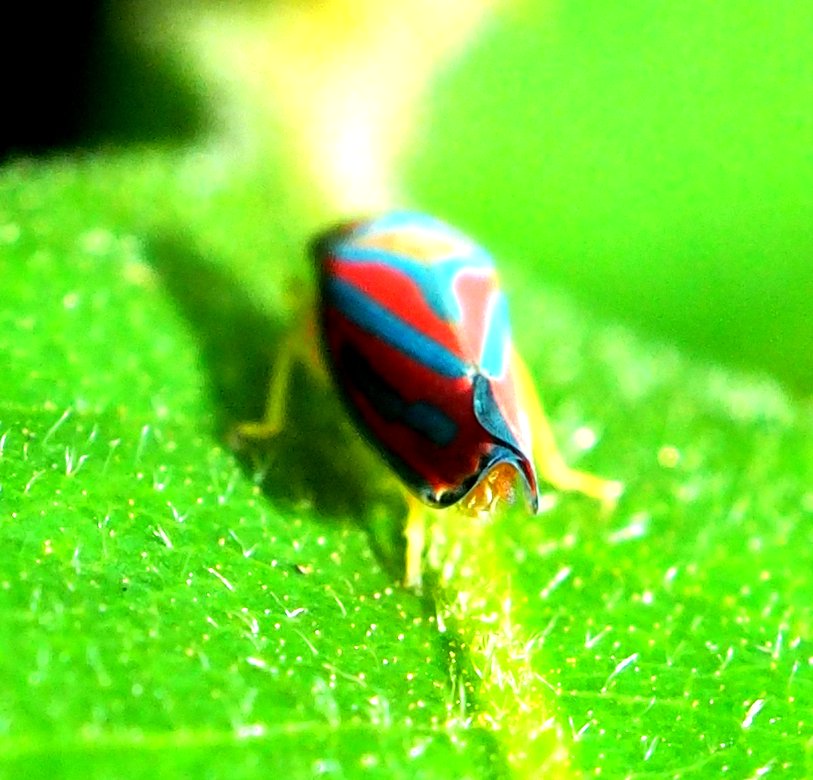
This bug looks to be a Spittle Bug. The second one reminds me of a treehopper, perhaps one like this one. The third one seems to be some kind of treehopper. I found it on mulberry back in 2015 and haven't identified it yet. Maybe one of you can do this.
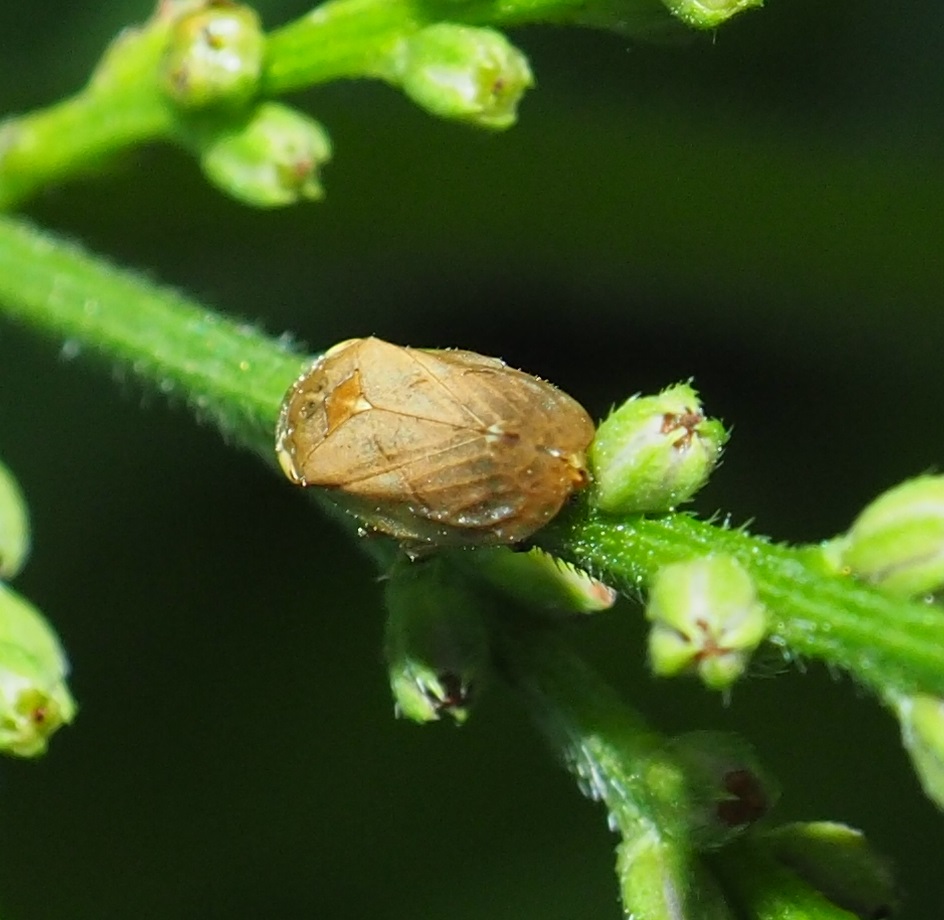
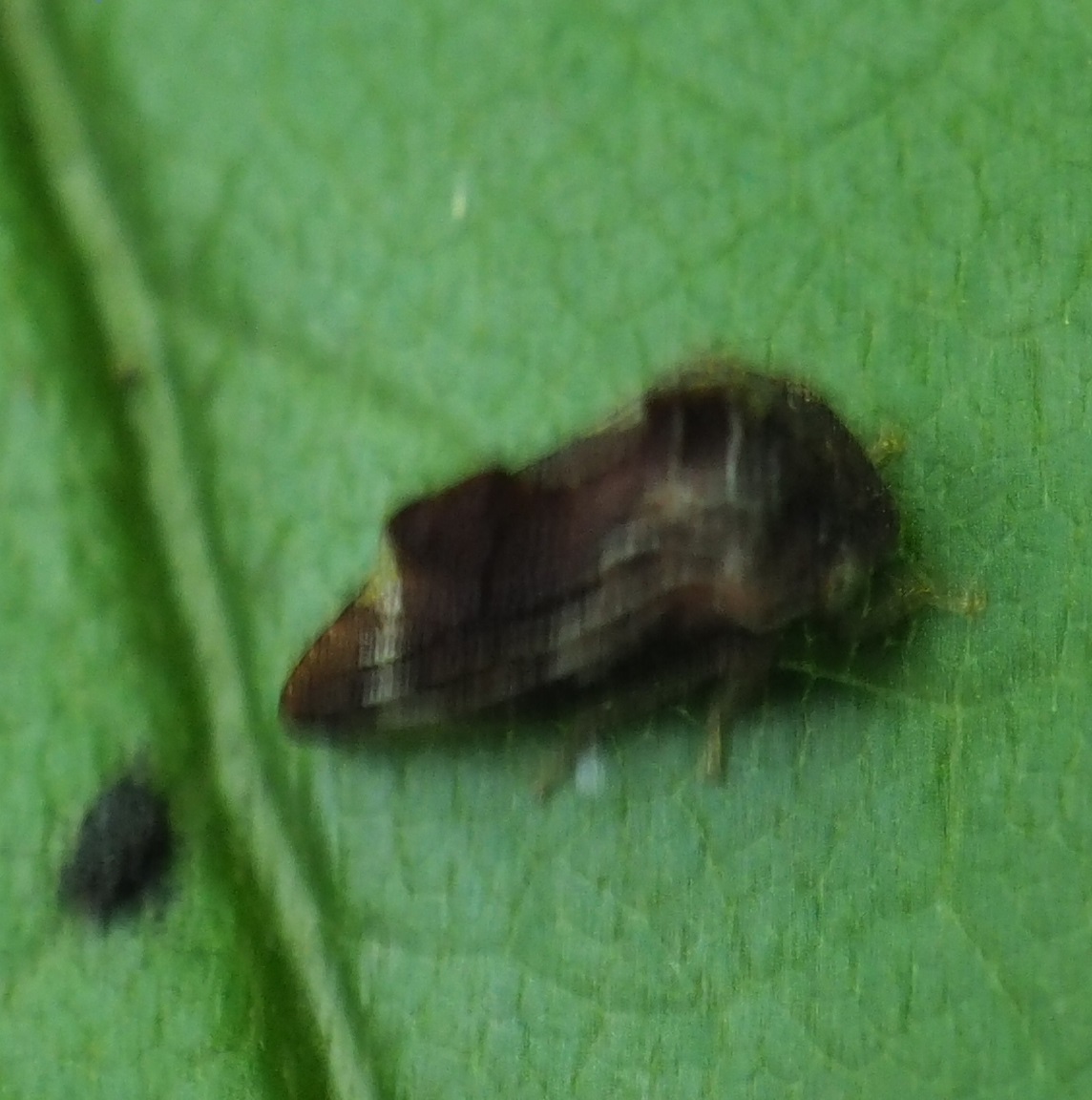
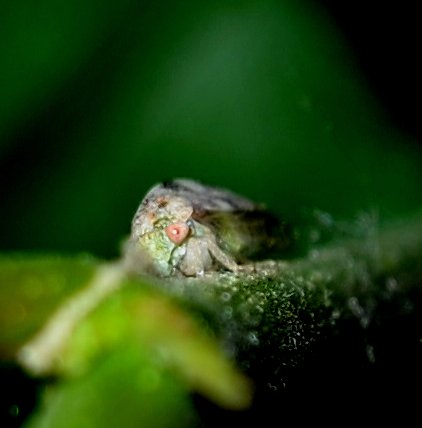
First here is the reddish stink bug that we first saw last week. It seems to have staying power or many relatives. The second one has more grey mixed with pinkish color. The third is either a blue hopper or a used shell of some kind of hopper. What a subtle color blue - it could just have taken the color from something else...
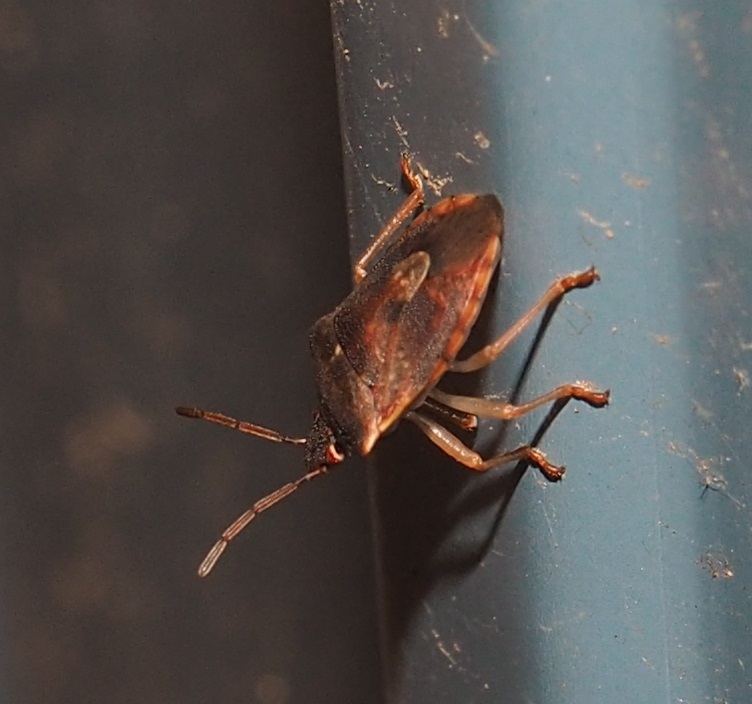
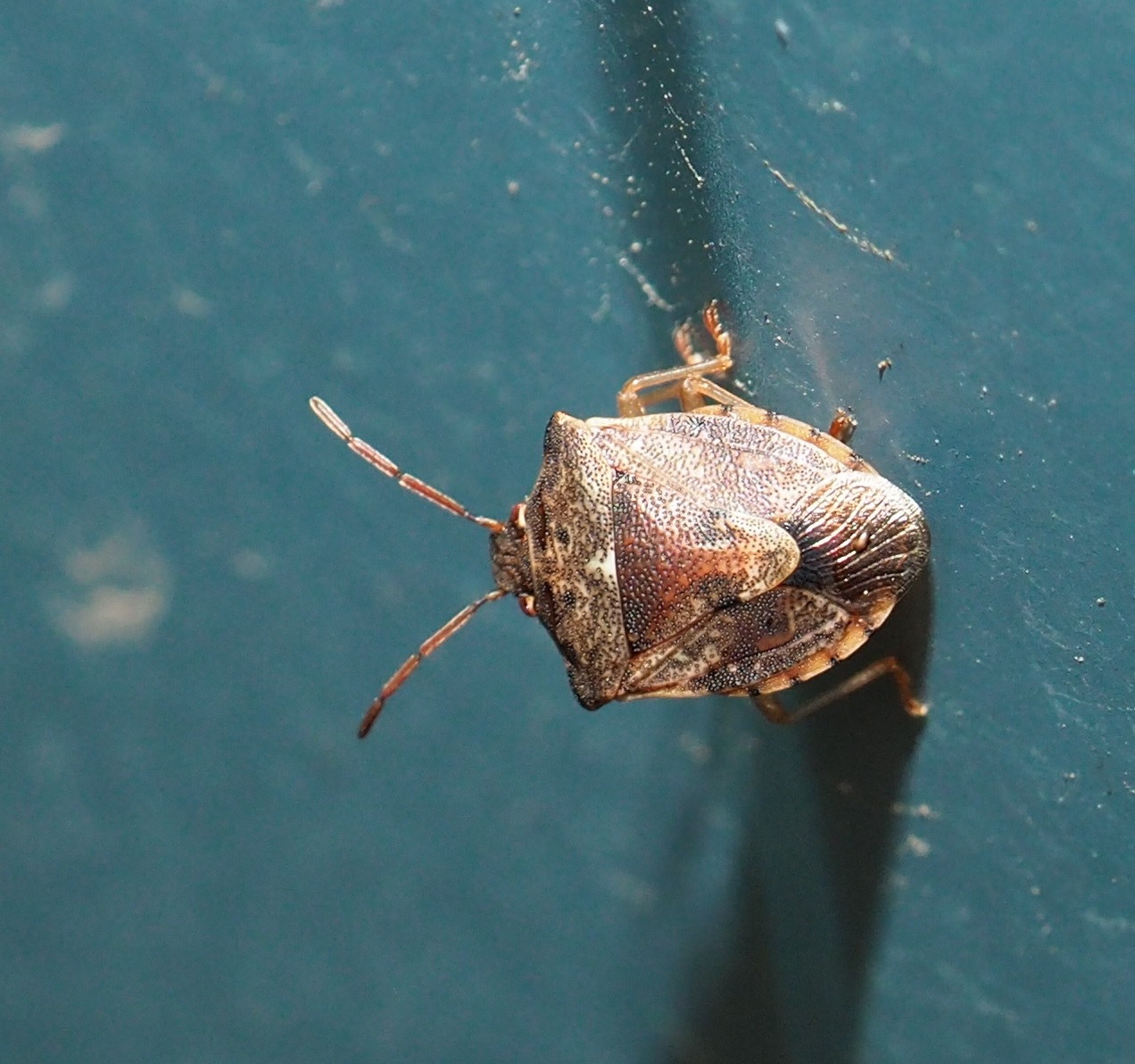
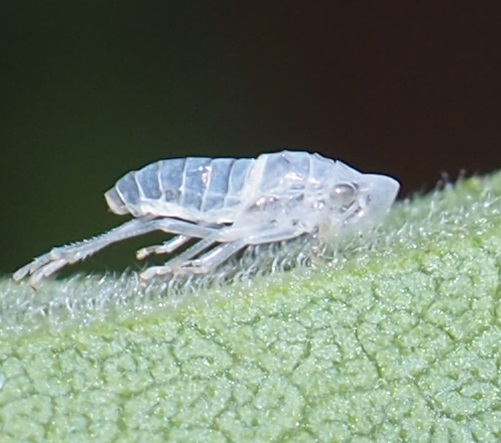
We seem to have wandered into Fly Country. This first image seems to be a kind of very bland Crane Fly. Next must be some kind of Fruit Fly. It was attacking a crumb on the rim of the bathroom sink. The third one is Minettia lupulina, cooling its heels on the shop siding.
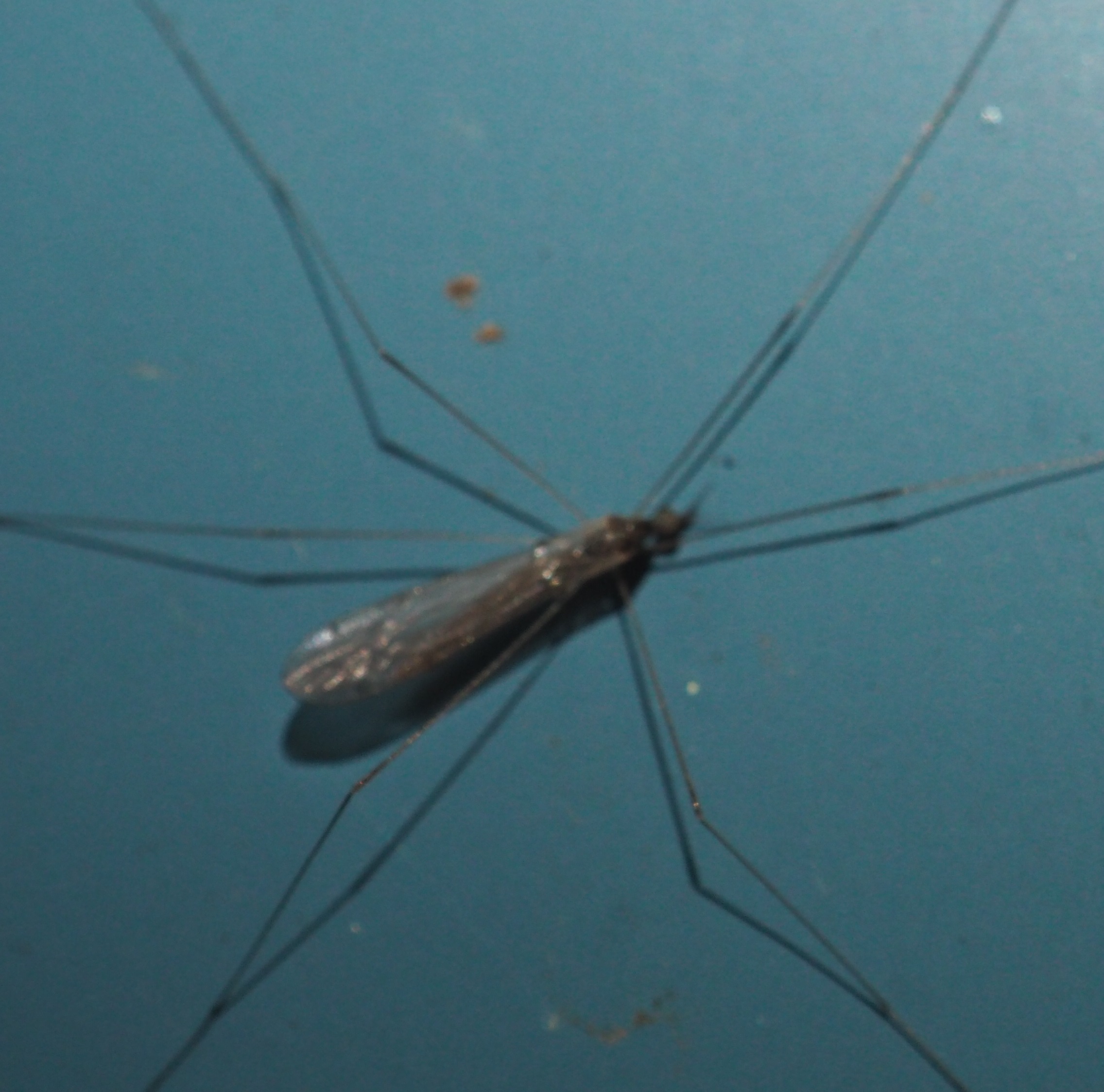
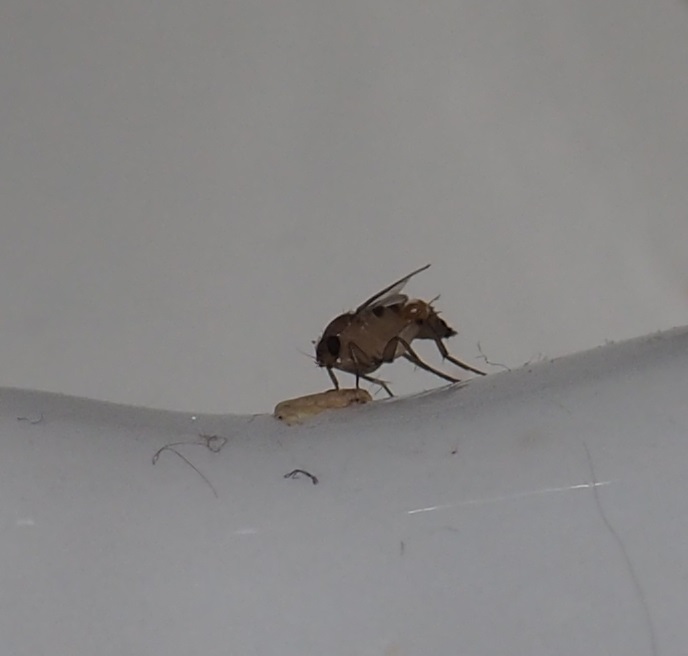

Here is a pretty realistic wasp-mimic fly.. And next is one of the most common flies in this habitat; the Root-Maggot Fly (known by its yellowish wings). Third is of course a Moth Fly.
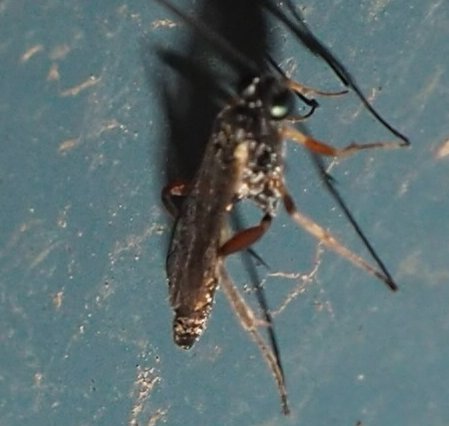
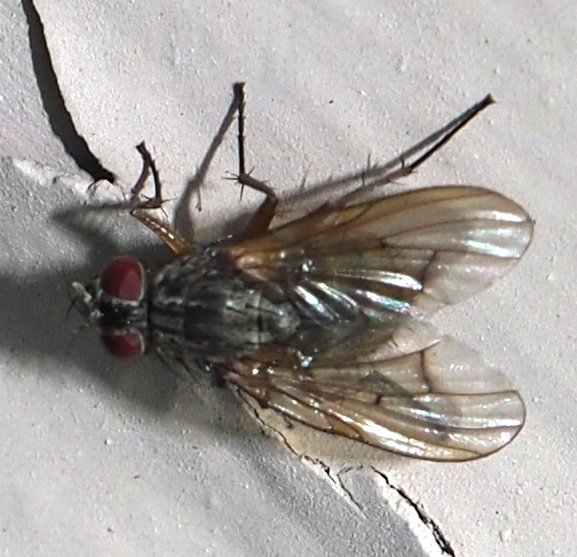
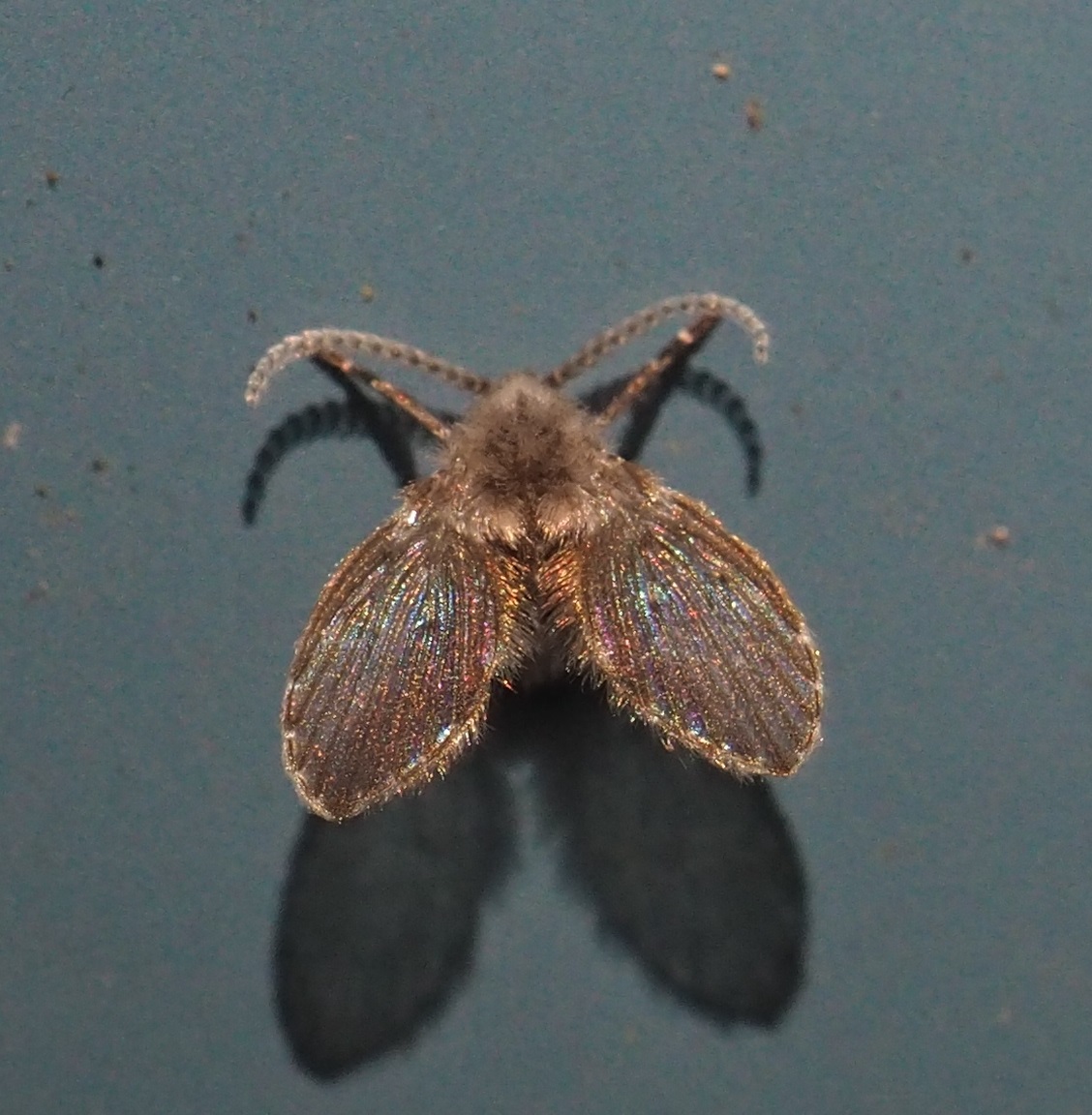
Just a couple more odd flies. First, a small bug with nice iridescent wings. Then our old pal the Orange Fly with spotty wing.
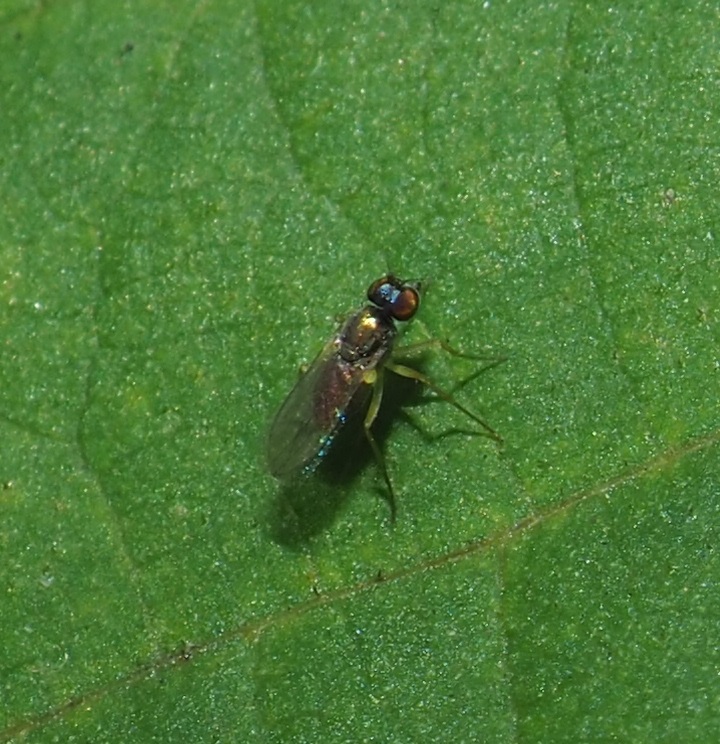
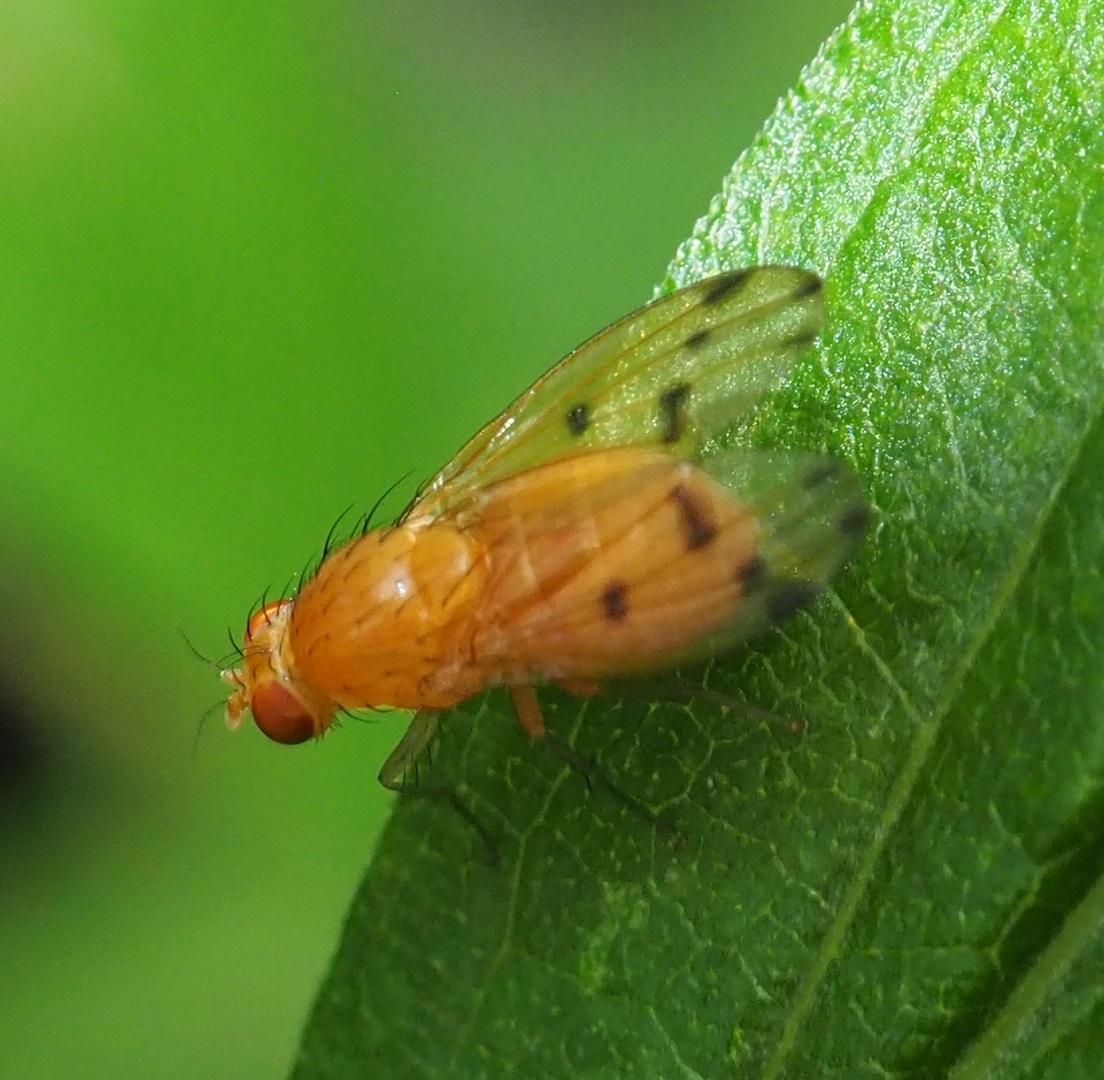
The Harvestmen are becoming more and more distinct from each other. This week we had a lot of the mixed red-and-black but also found a few more of the All-Red ones. But this is the first time I've seen this dark-topped one (two images).
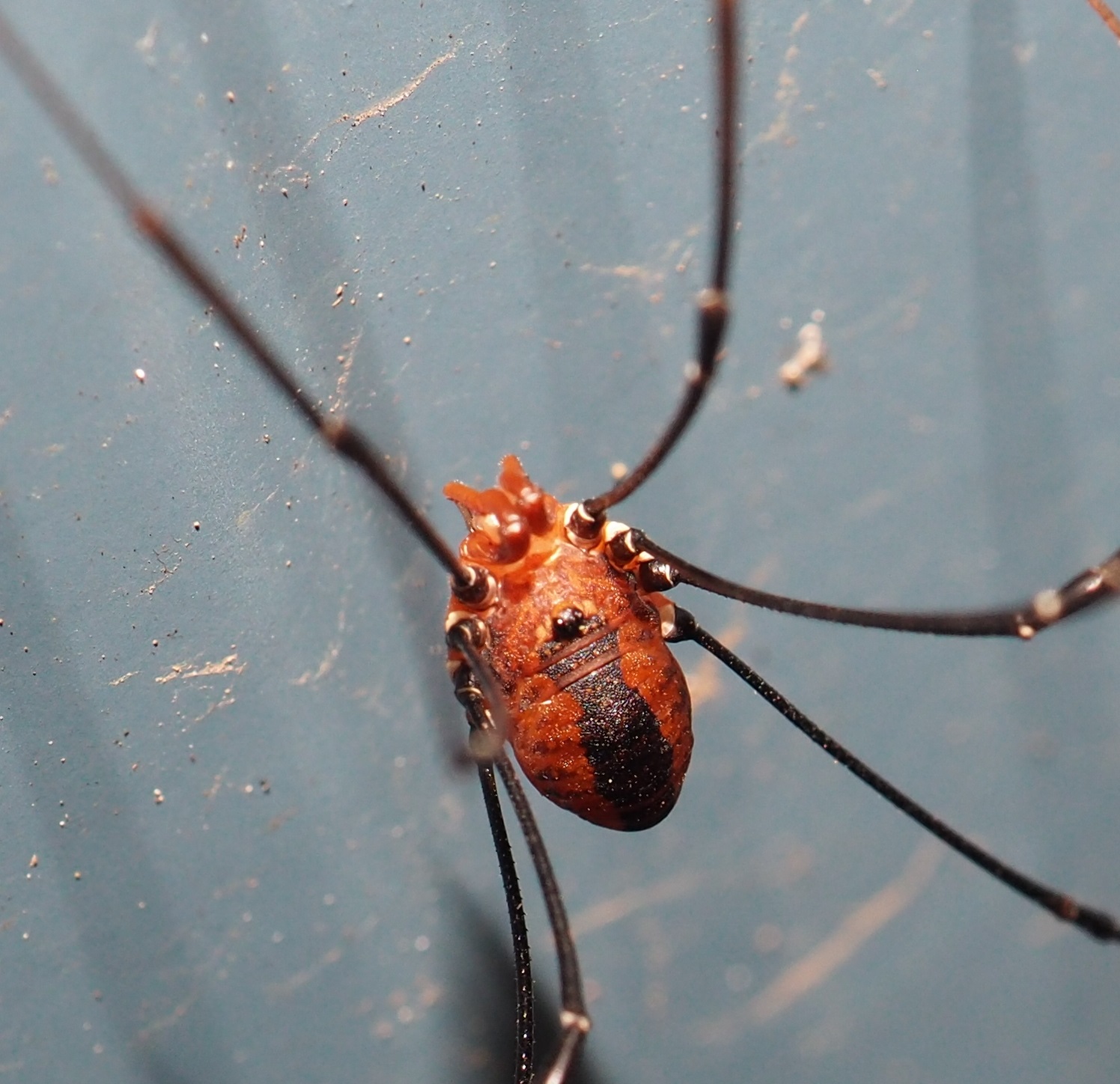
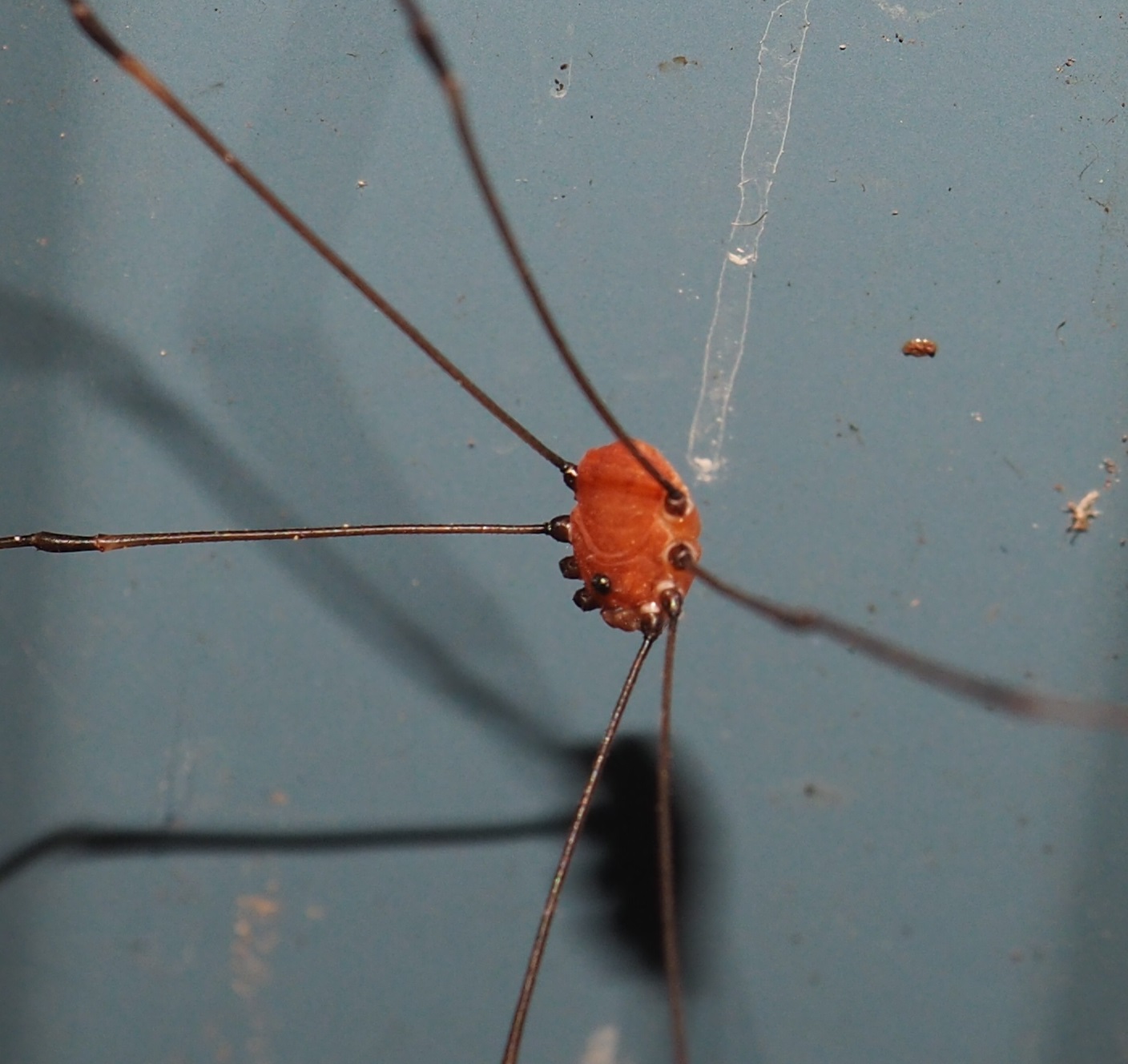
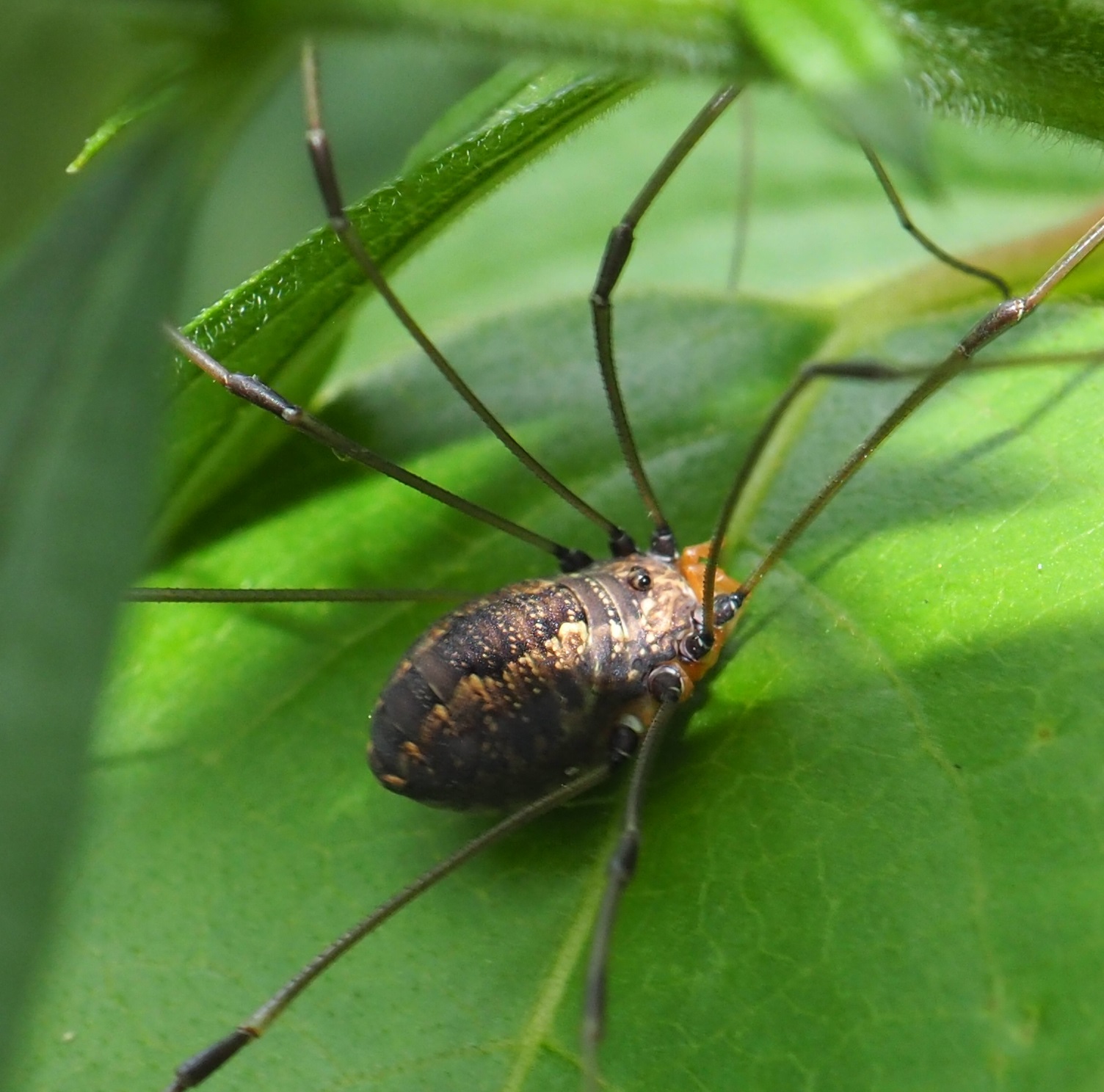

One of the Swamp Milkweed flower clusters had one pod develop. Second seems to be a mysterious moth of some kind. Third is a pile of berries, apparently undigested. They made me think of an old college song
"They asked me if it's true
Raccoon S**t is blue
So of course I said,
You have been misled --
Raccoon S**t is red."
If anyone knows the source of this take-off on and to the tune of "Smoke Gets in Your Eyes", I'll be glad to credit it. Thanks. Of course I don't know the source of, or animal whose gut contained, the berries.
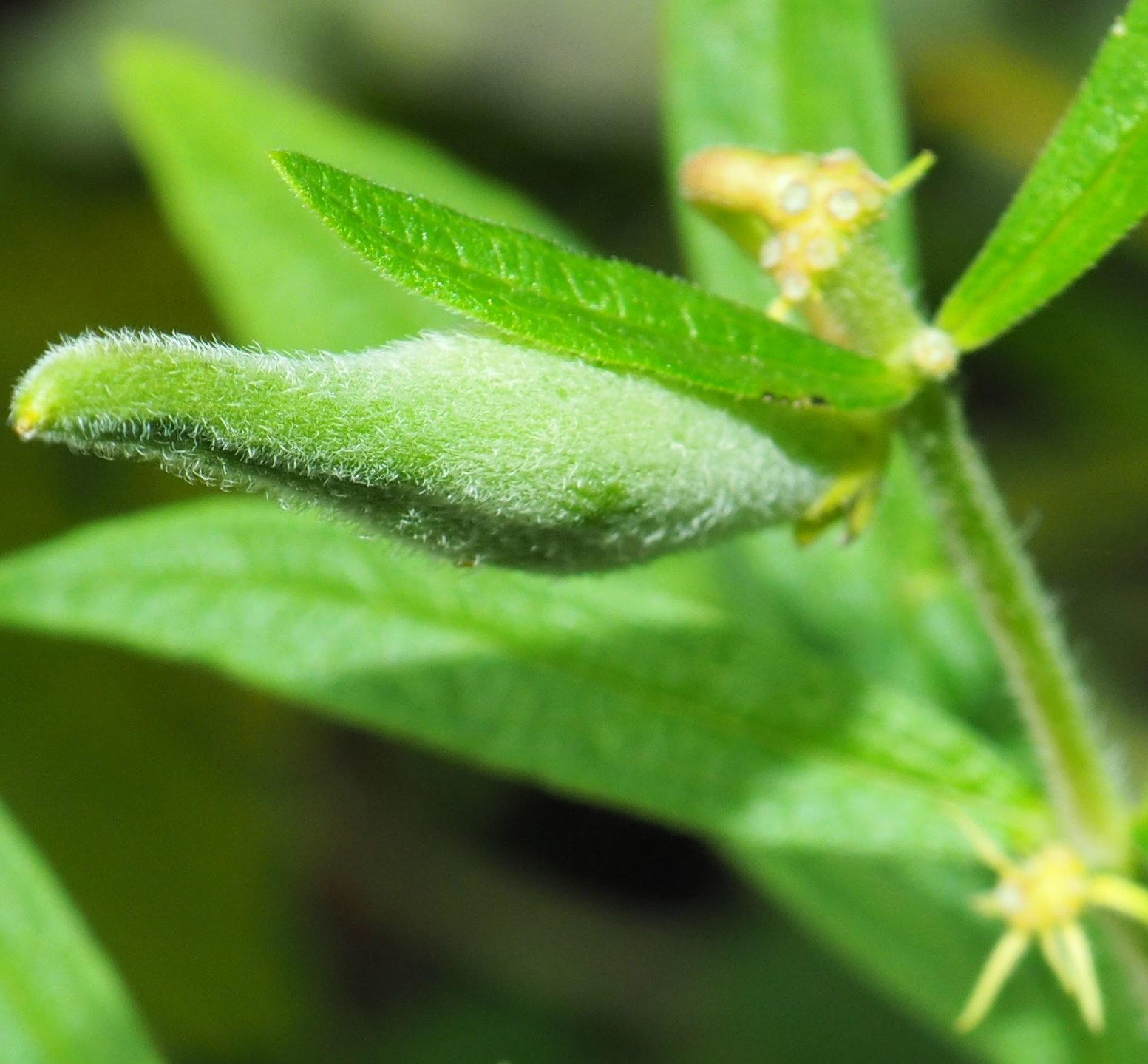
Oh my gosh, is this a reward for recalling that song? I took this picture during the week. I thought I might have heard a frog garrumphing our there. But as I was scanning this picture for points of interest, I saw something that shook me totally. You will need to click on the picture until it disgorges its secret. Hint: the secret is near bottom, just about right of center. This, of course, really raised my heart - he had come in July last year and I had thought he couldn't possibly be alive. But He's Baaaaack!
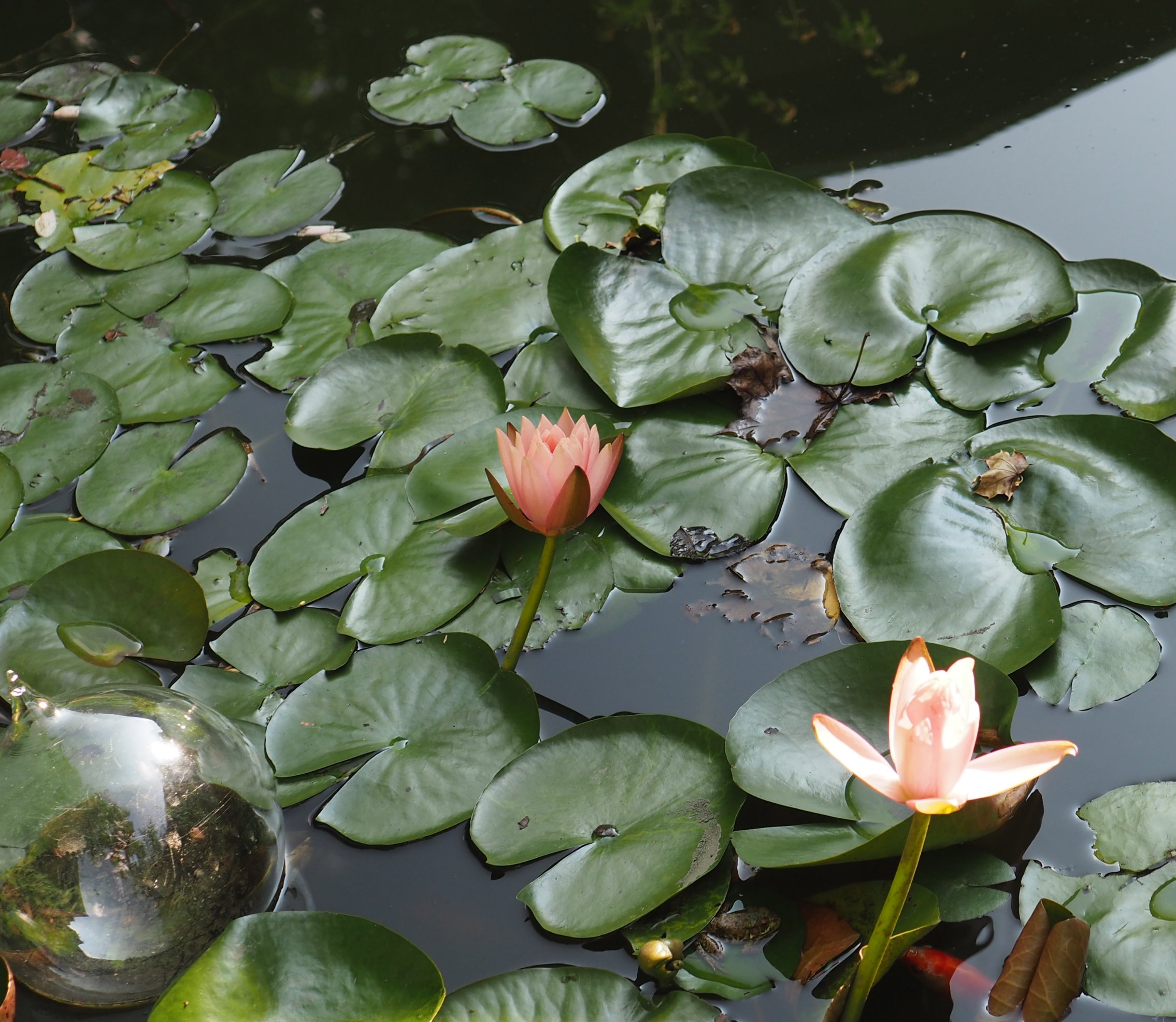
Most of the Scorpionflies I've seen this year have been males, who carry their tails curled up like a scorpion's. But this week I've seen one or more females. There are many species of Scorpionflies, based on the wing pattern of black on clear. This one or ones seem to be Panorpa confusa.

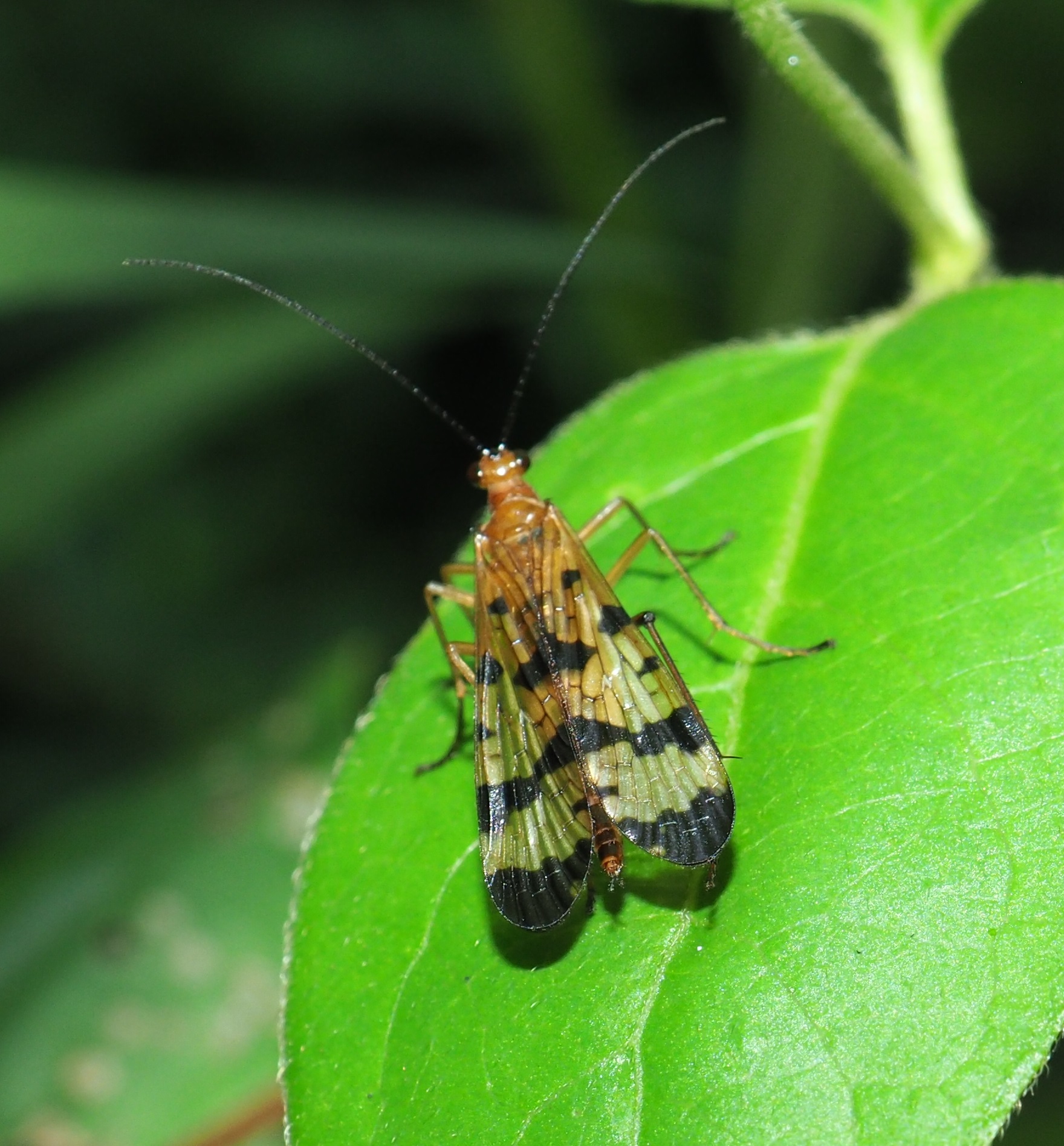
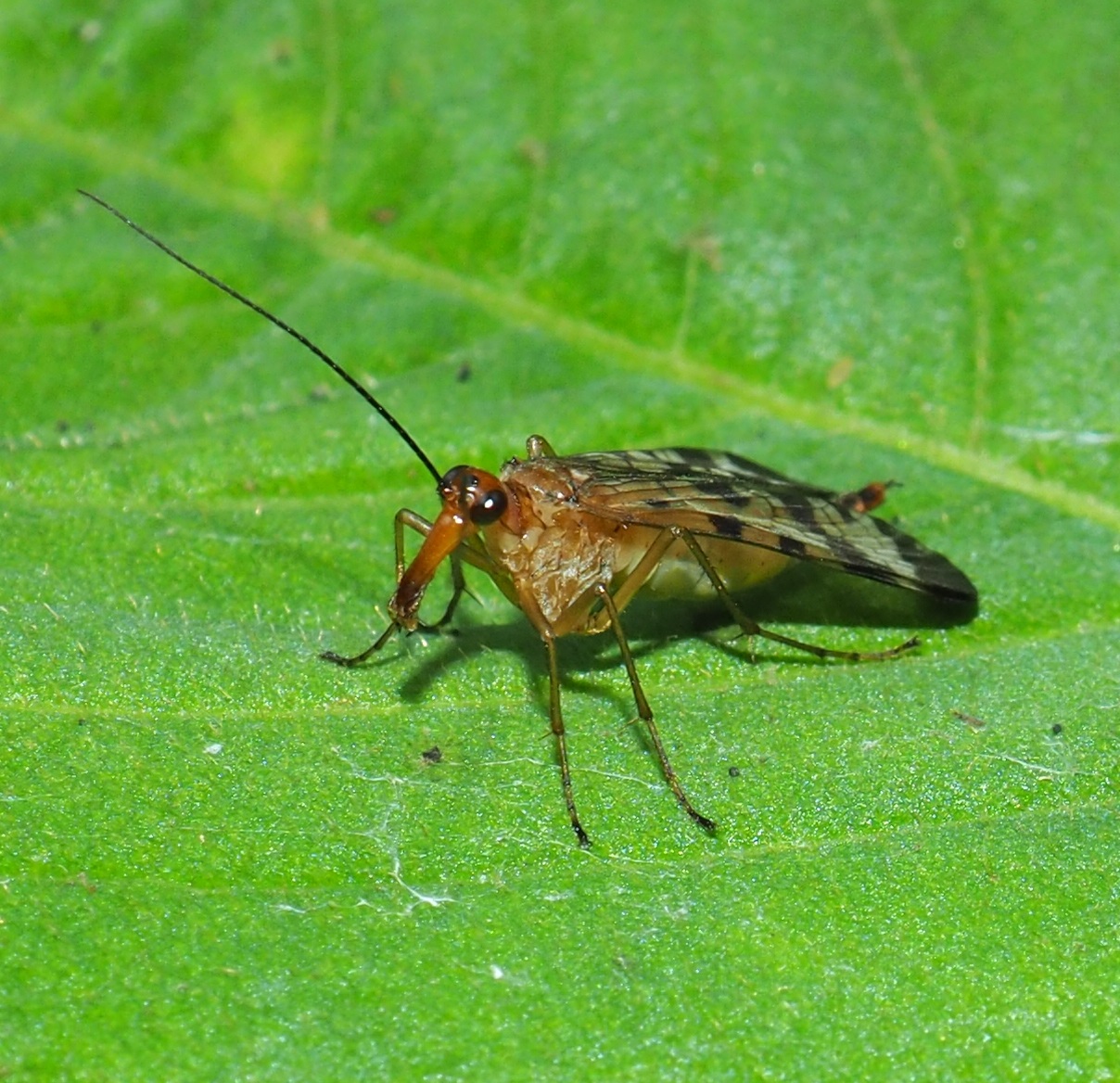
A few flower vignettes: Snowberry, Phlox, and Nightshade blooms and berries.
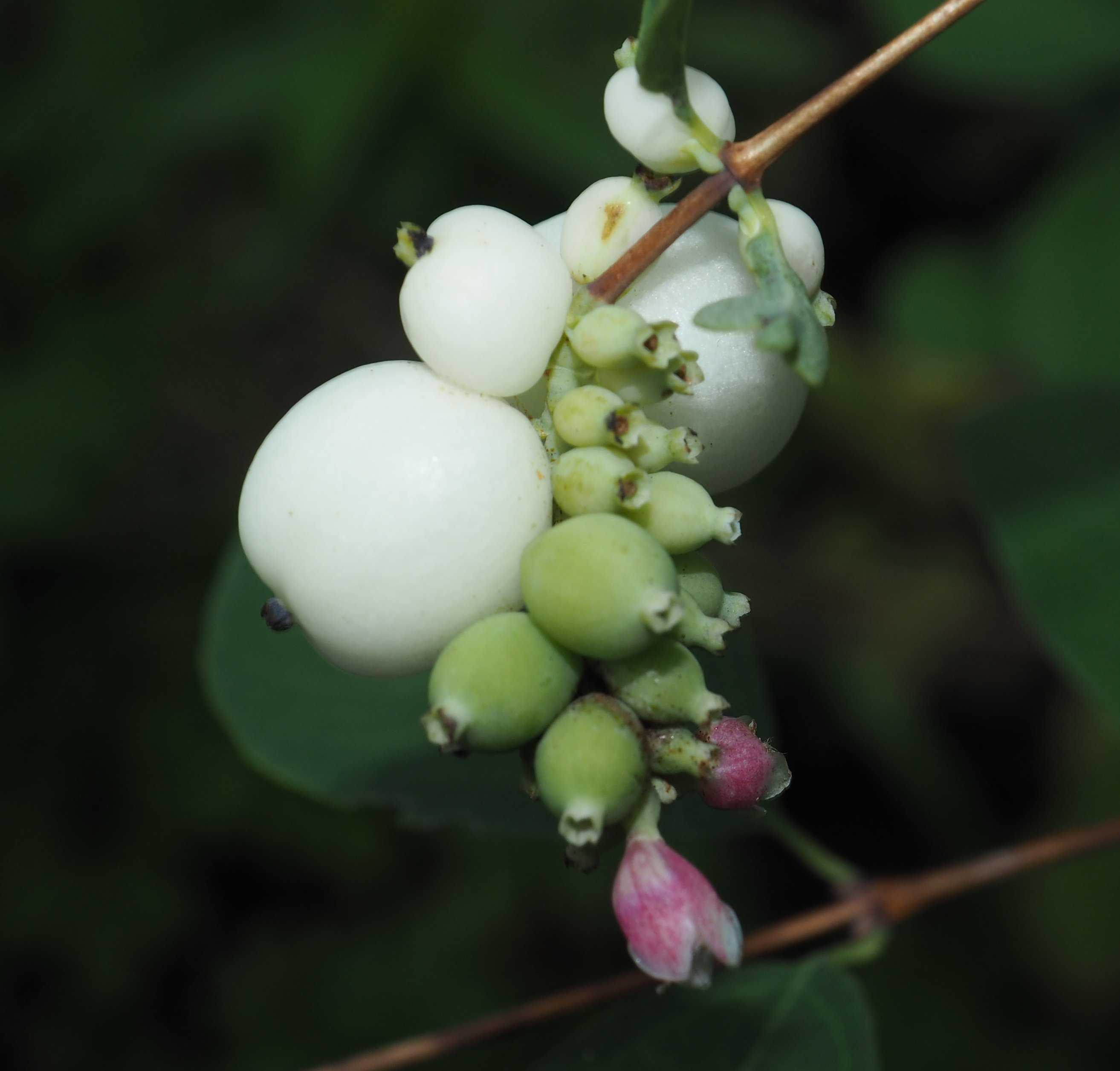
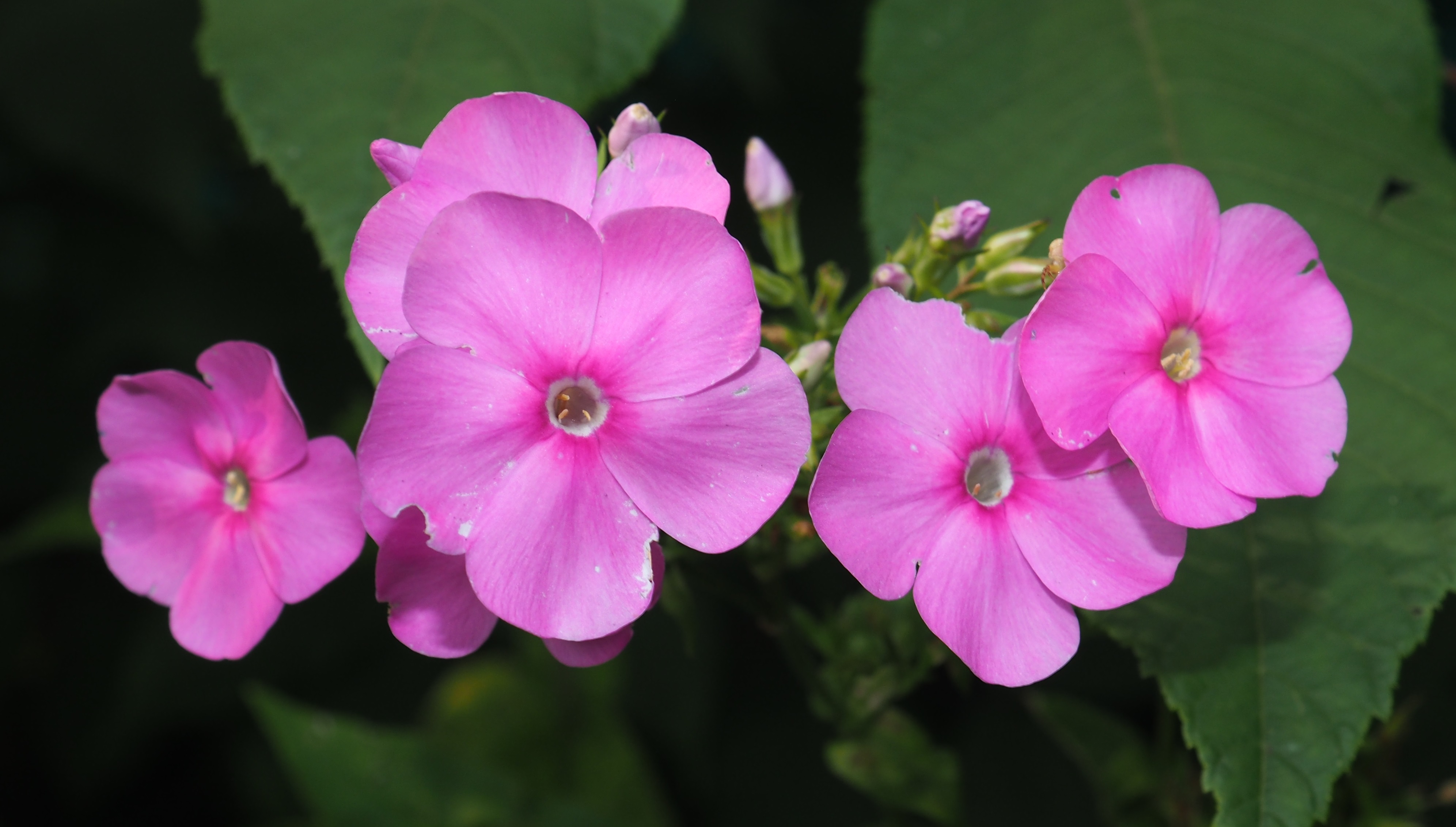

The little Crab Spiders are back in multitudes. The first two are I think a couple of Northern Crab Spiders. Third is an almost grown Cross Orbweaver.
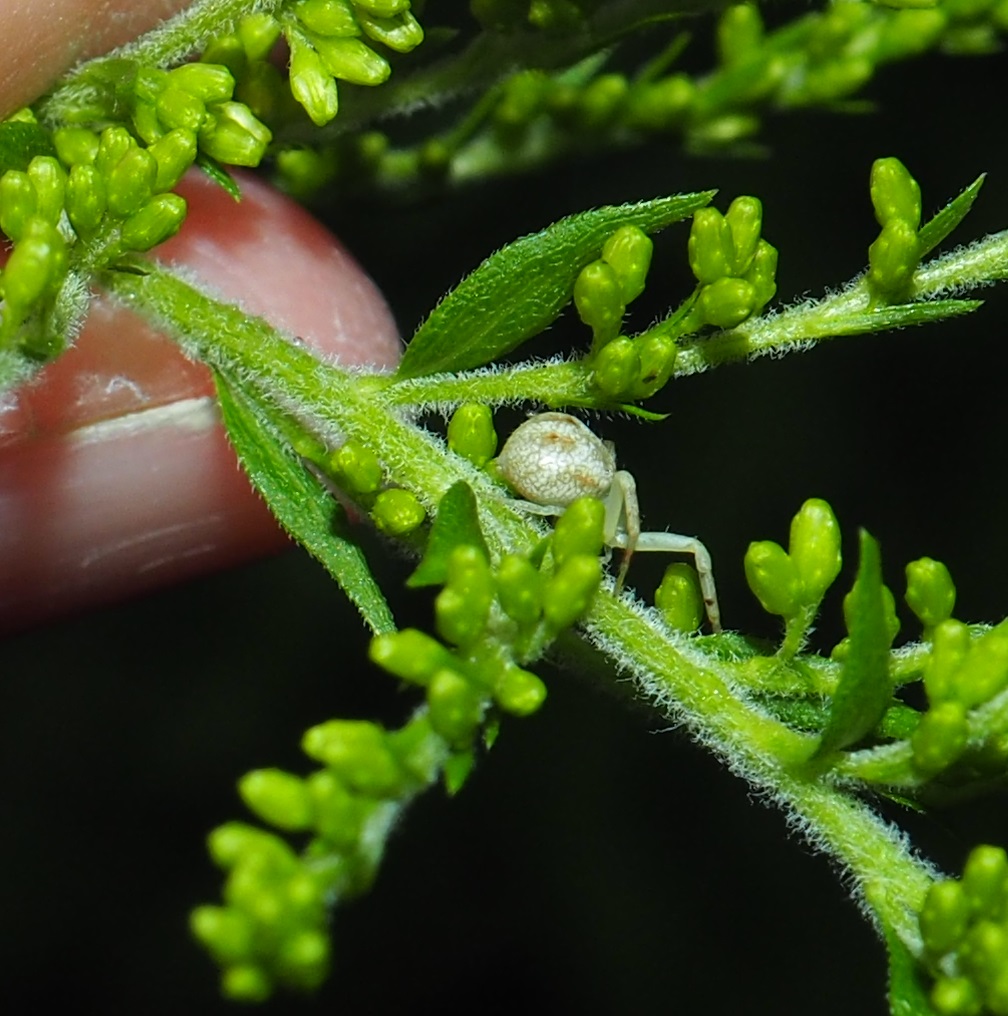
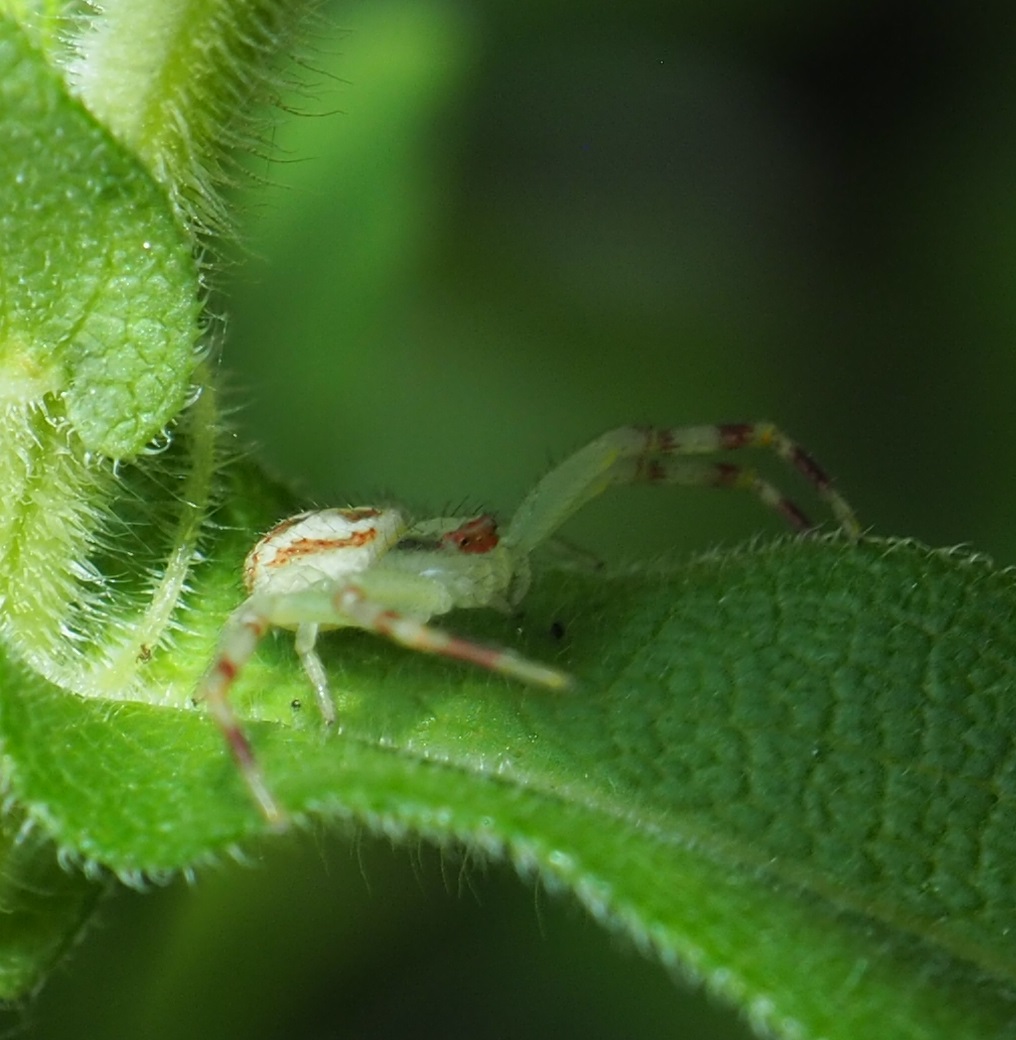
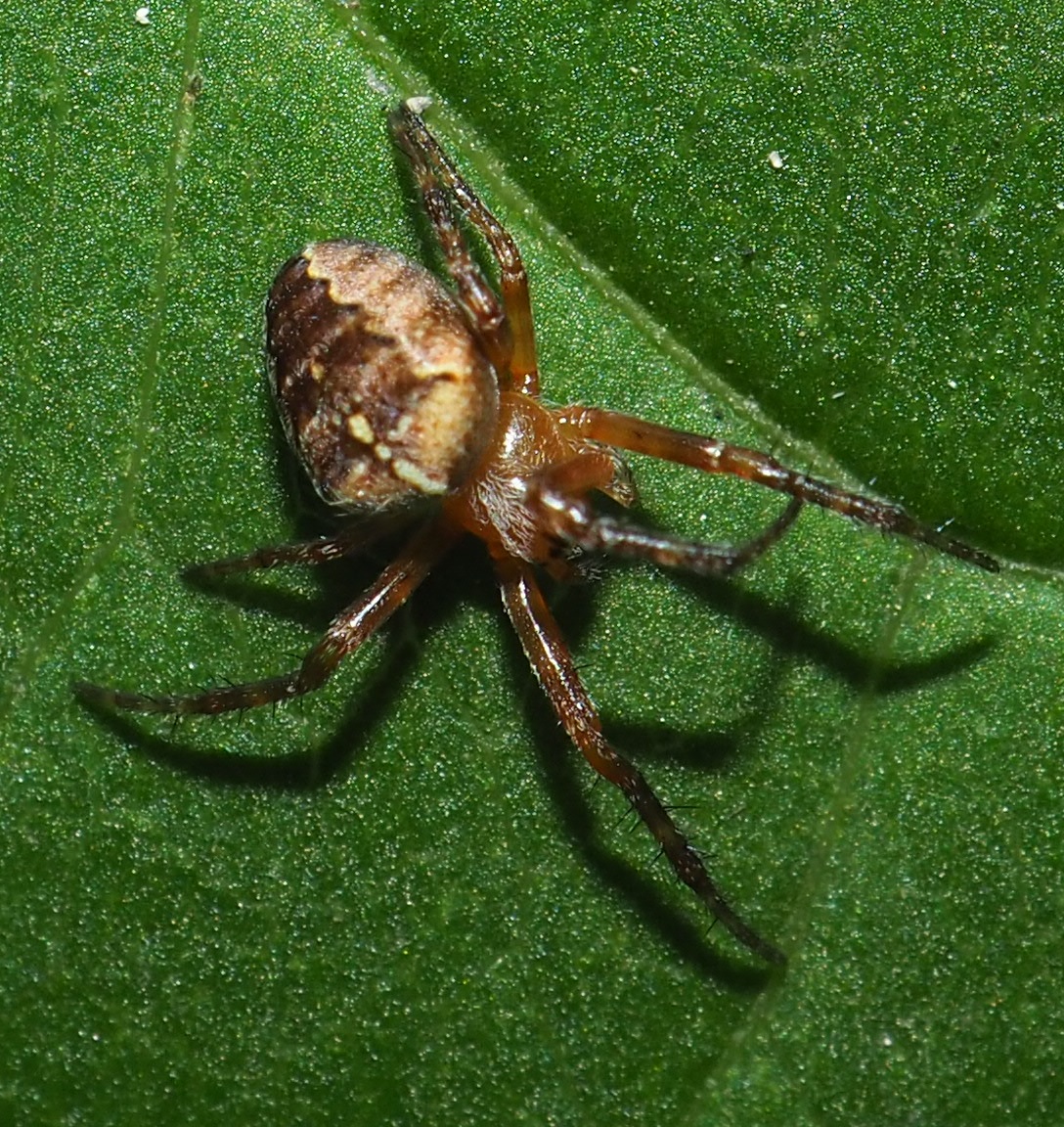
These spiders are probably not old enough to be identified, but first is a quite small little pink spider. Second may be a Grass Spider or perhaps a Ghost Spider. Third is a female Dimorphic Jumper (there are actually many pattern variations in this species.) She hides out in the siding to the left of the deck door (if you are on the deck).
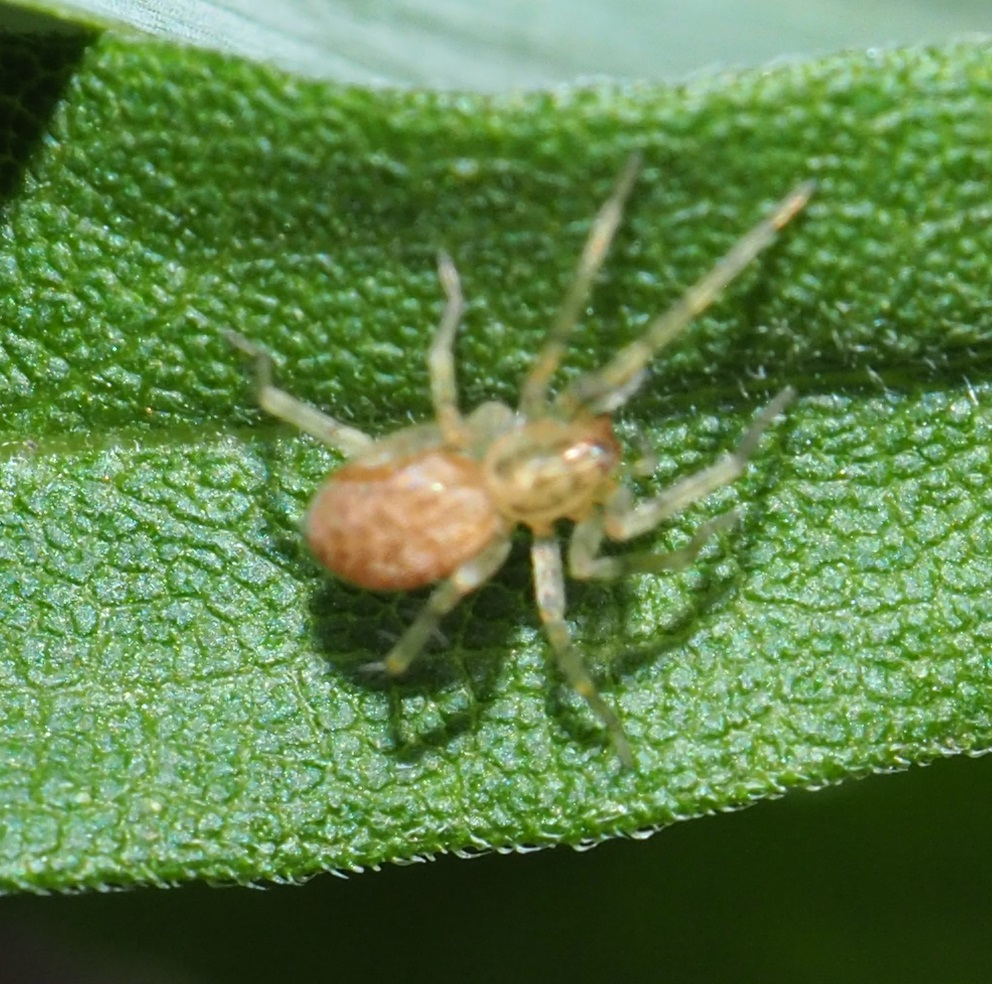


Here are some little wasps,looking sadly for some good goldenrod. Eumenes fraternus is a little wasp with a thread waist and a comma on what would be its thigh. The female has the 3-bladed fan picture on its face. (The male's face is a long vertical lens-shape.) In picture two, the wasp has an ovipositor, so it's female and probably either an ichneumonoid or a braconid wasp. Third is one of those little ichneumons who vibrate their antennae (Why? Beats me unless it draws in some sound pattern.)
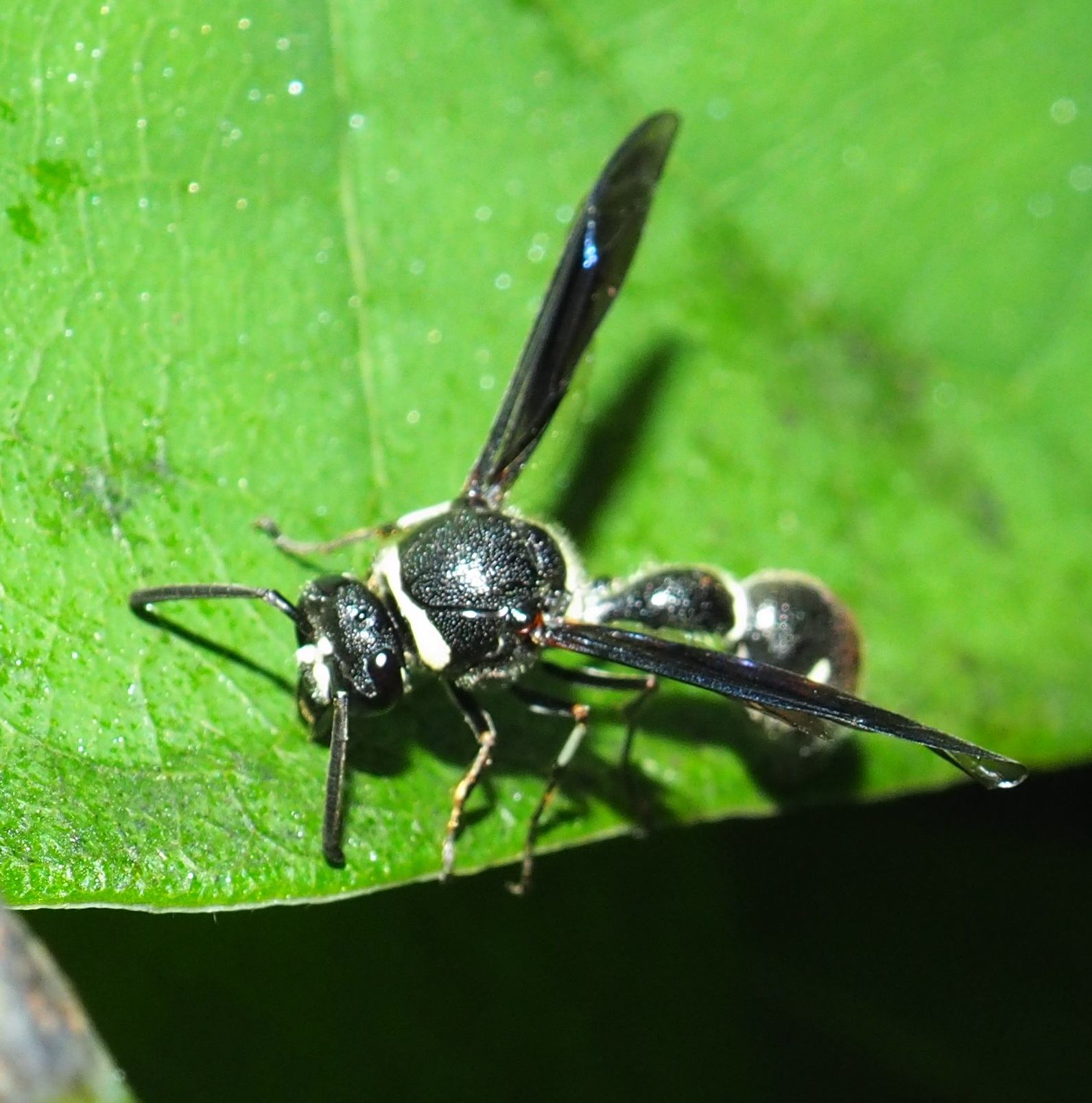
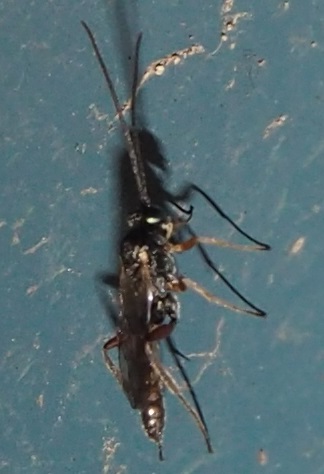
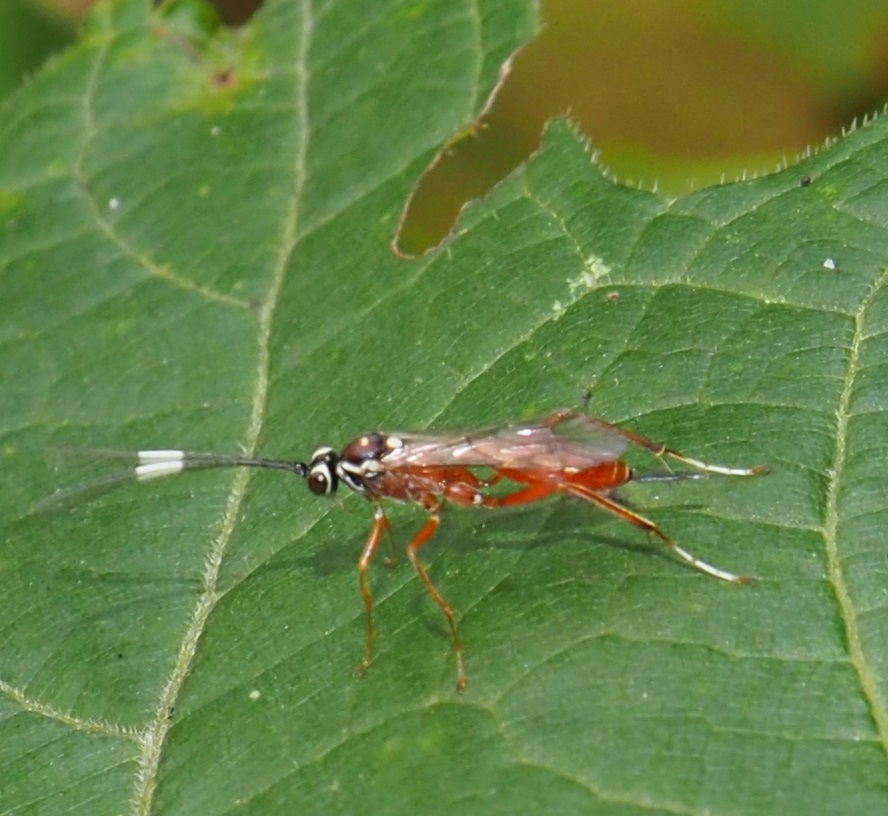
Folks, we are at the end of my pictures for this crazy week. I hope you will have some time to go out and see something you never saw before.
Take good care,
Love to everyone,
Martha
Back to August 12, 2018
Forward to August 26, 2018
Back to main menu
copyright Martha O'Kennon 2018

































































